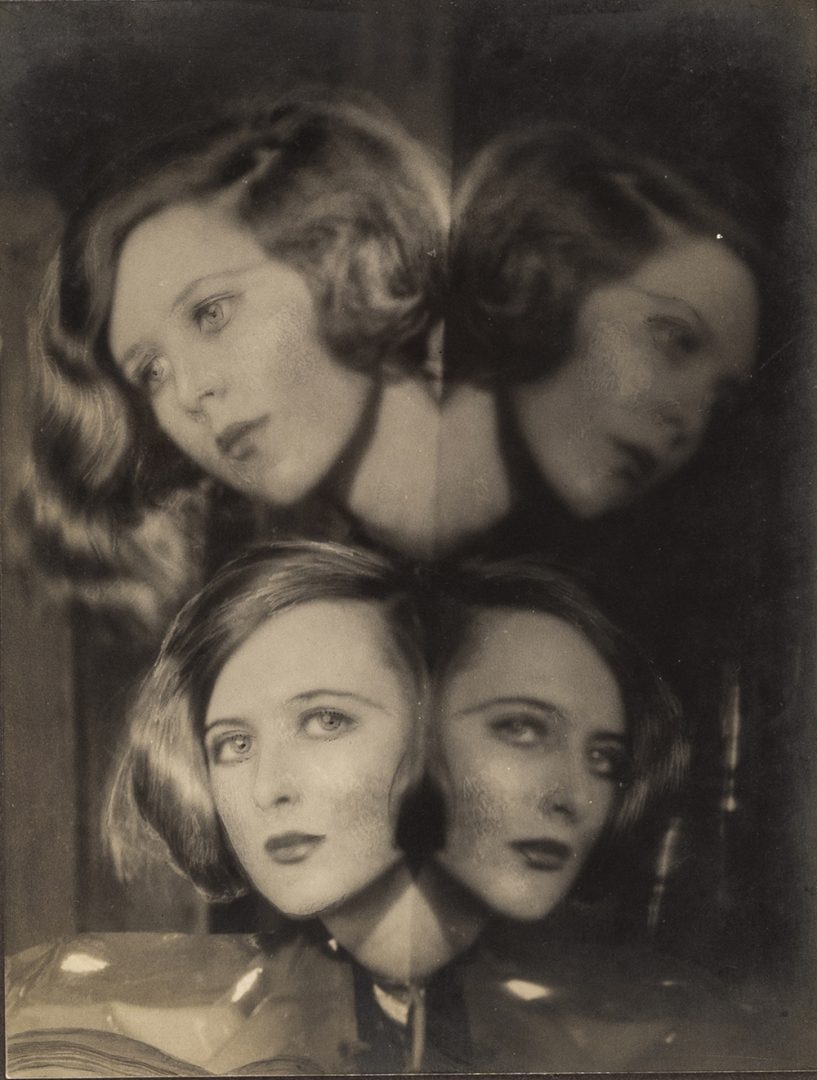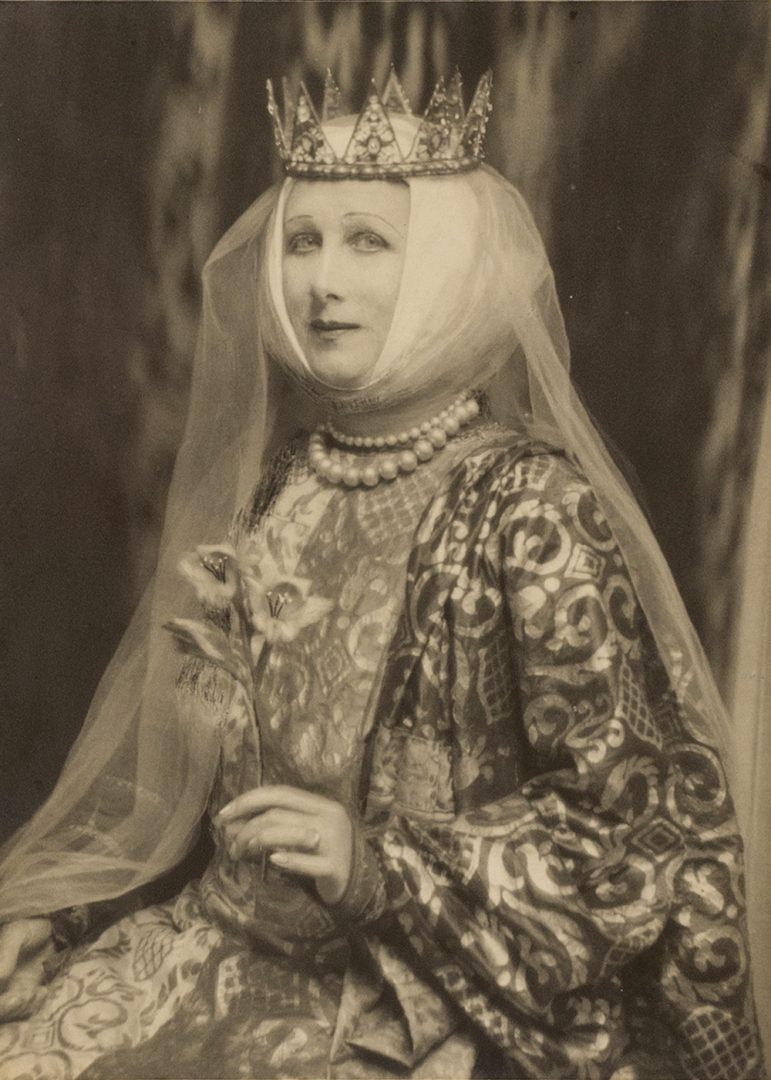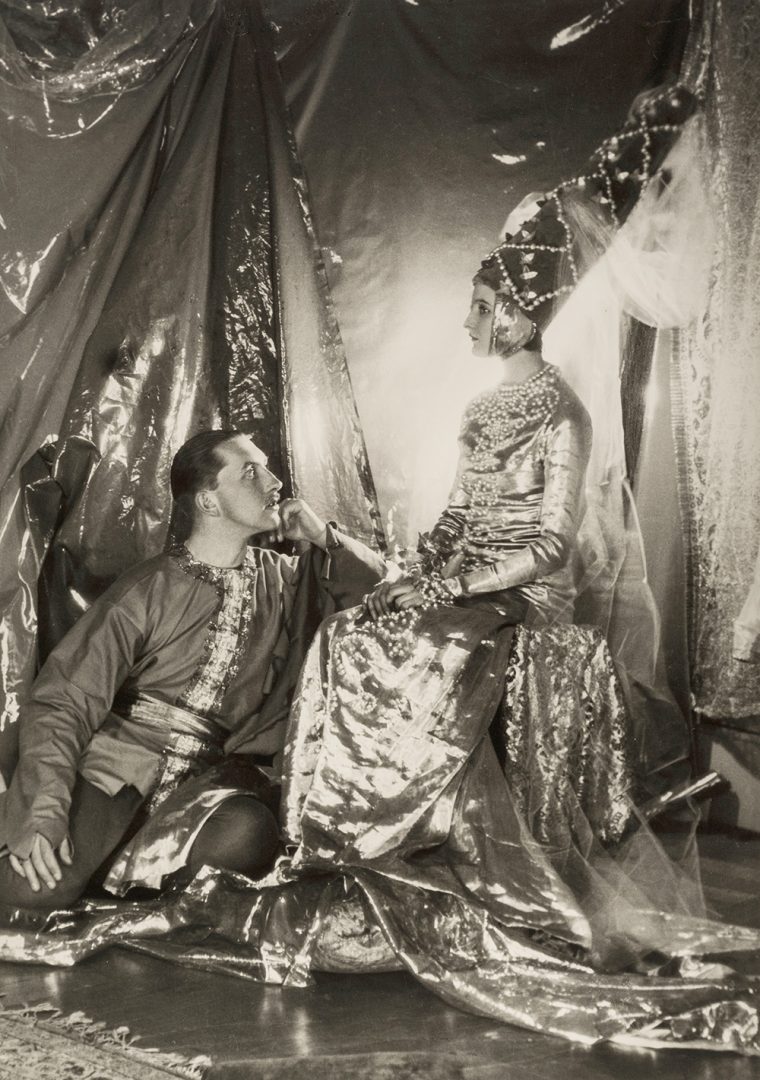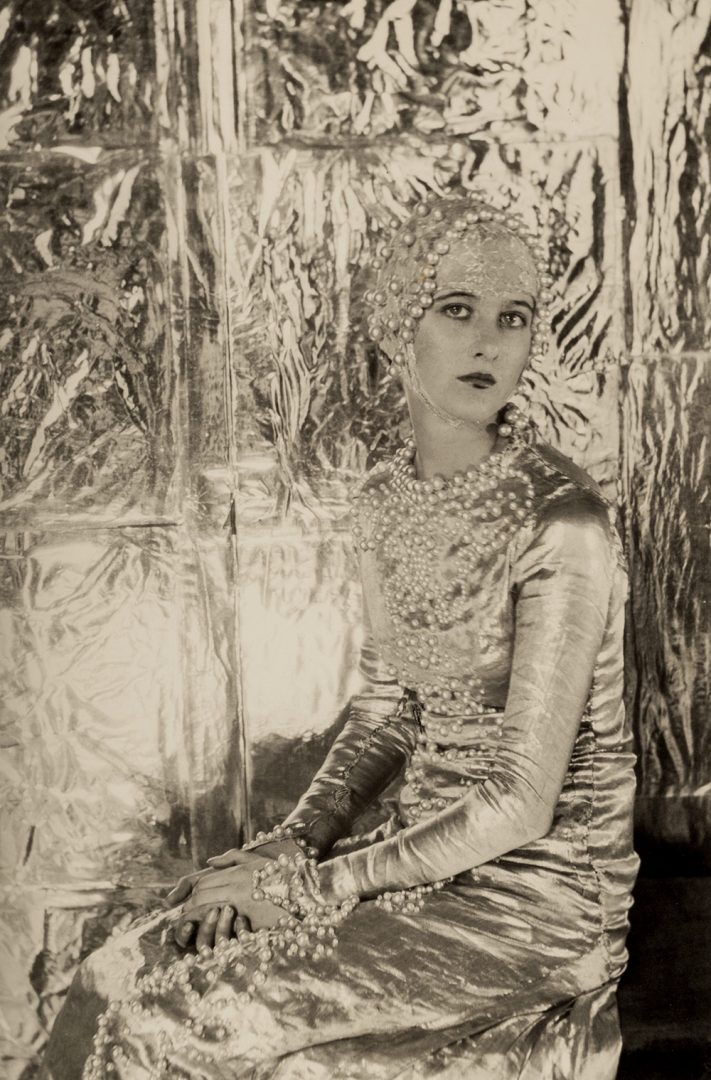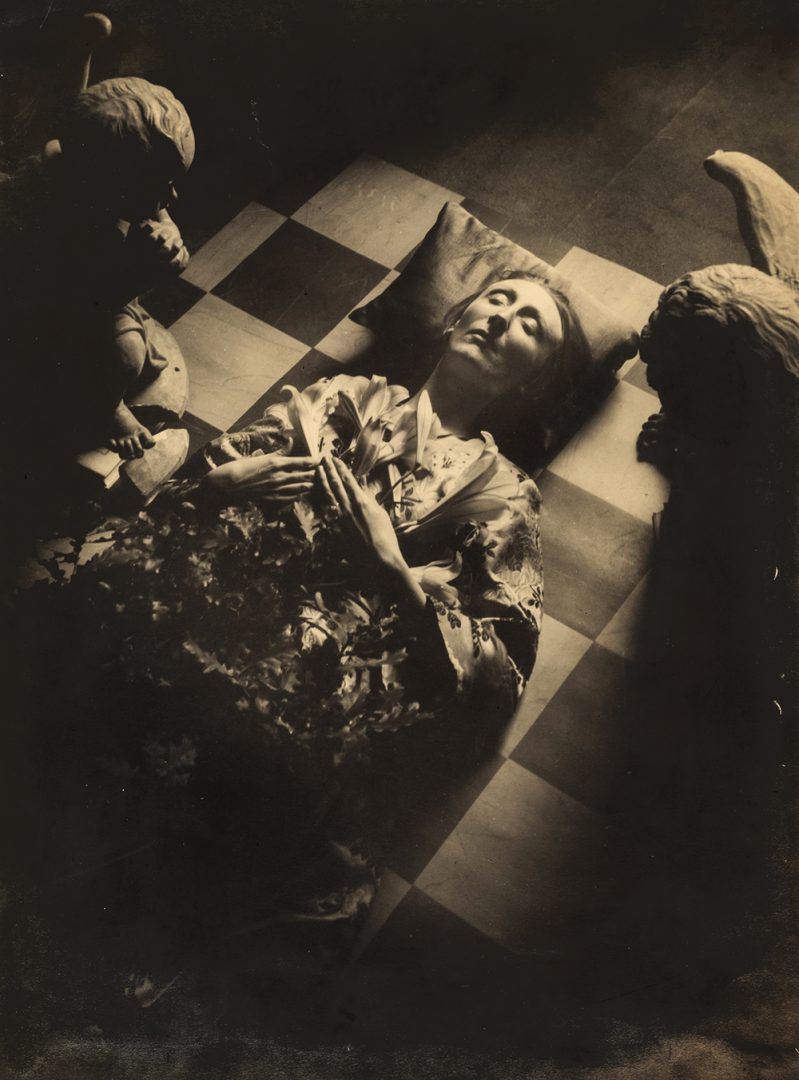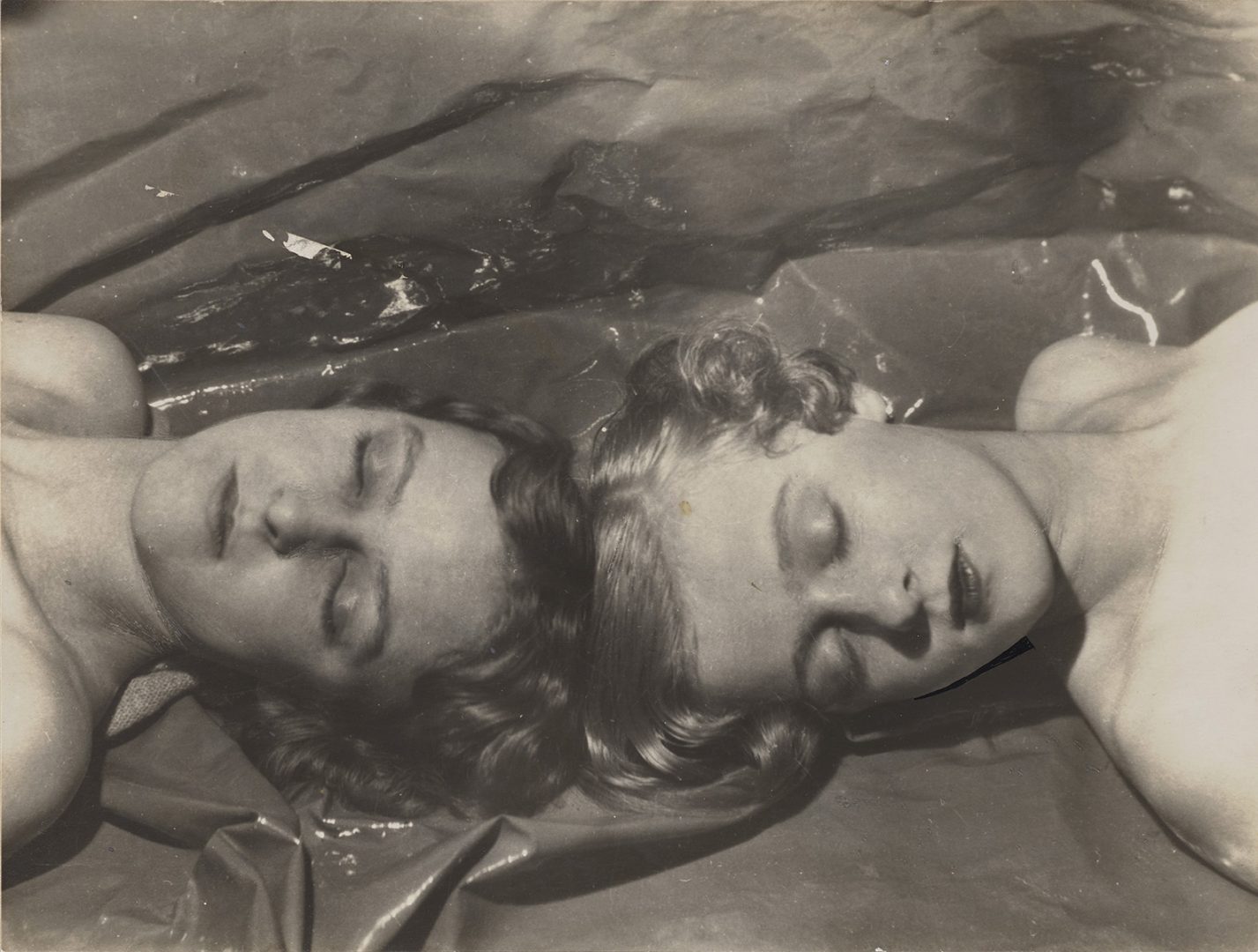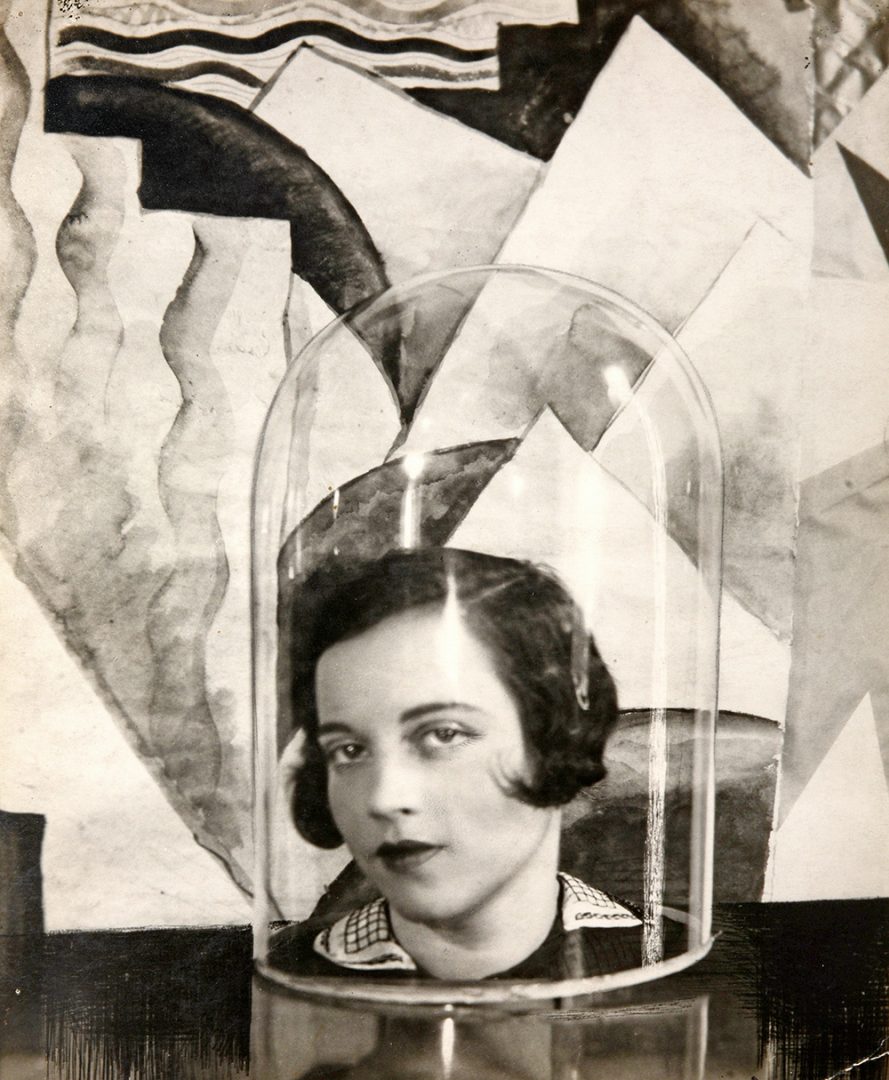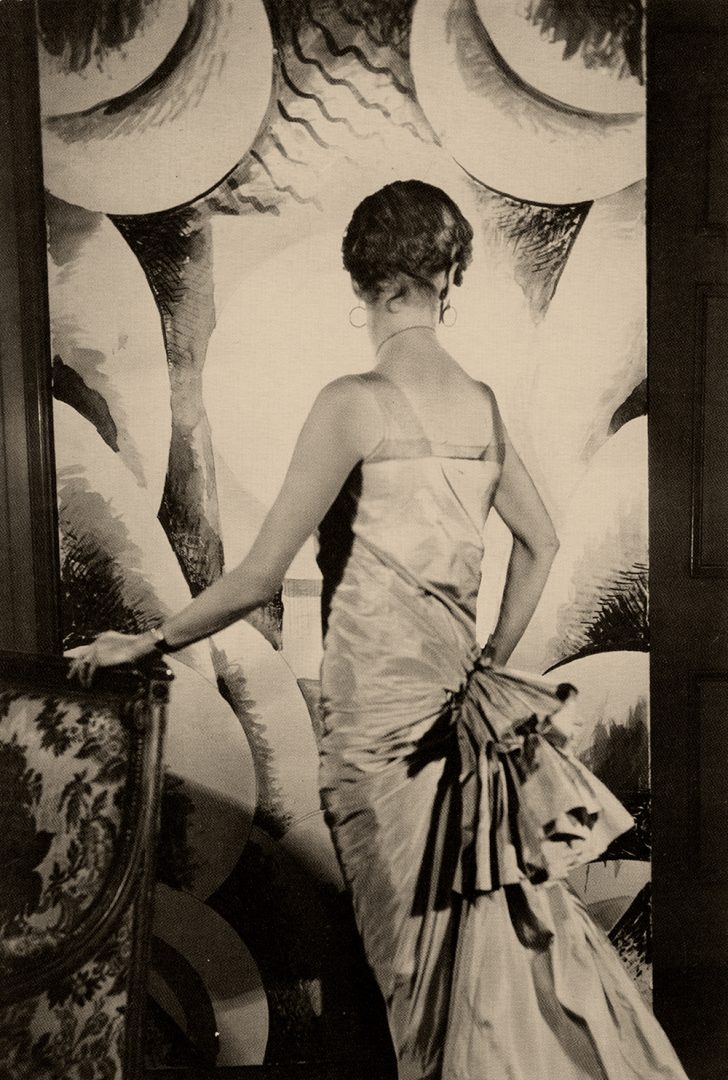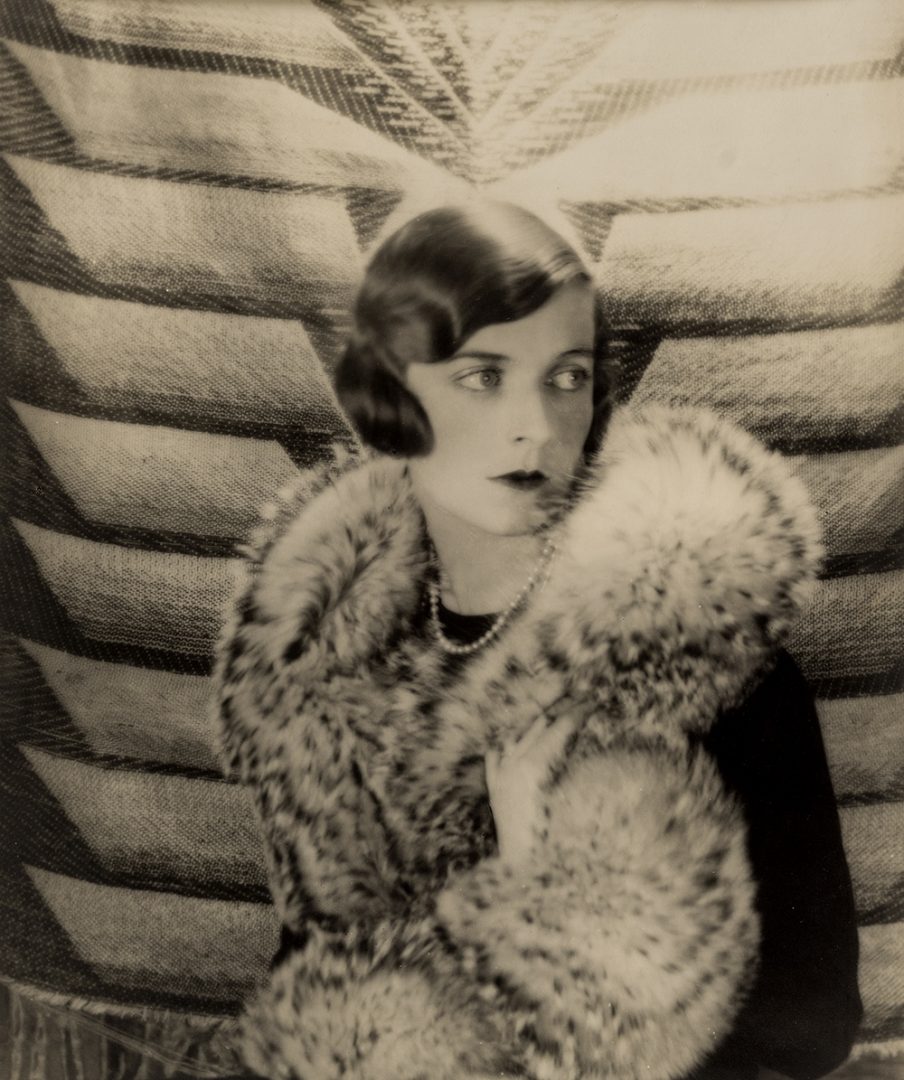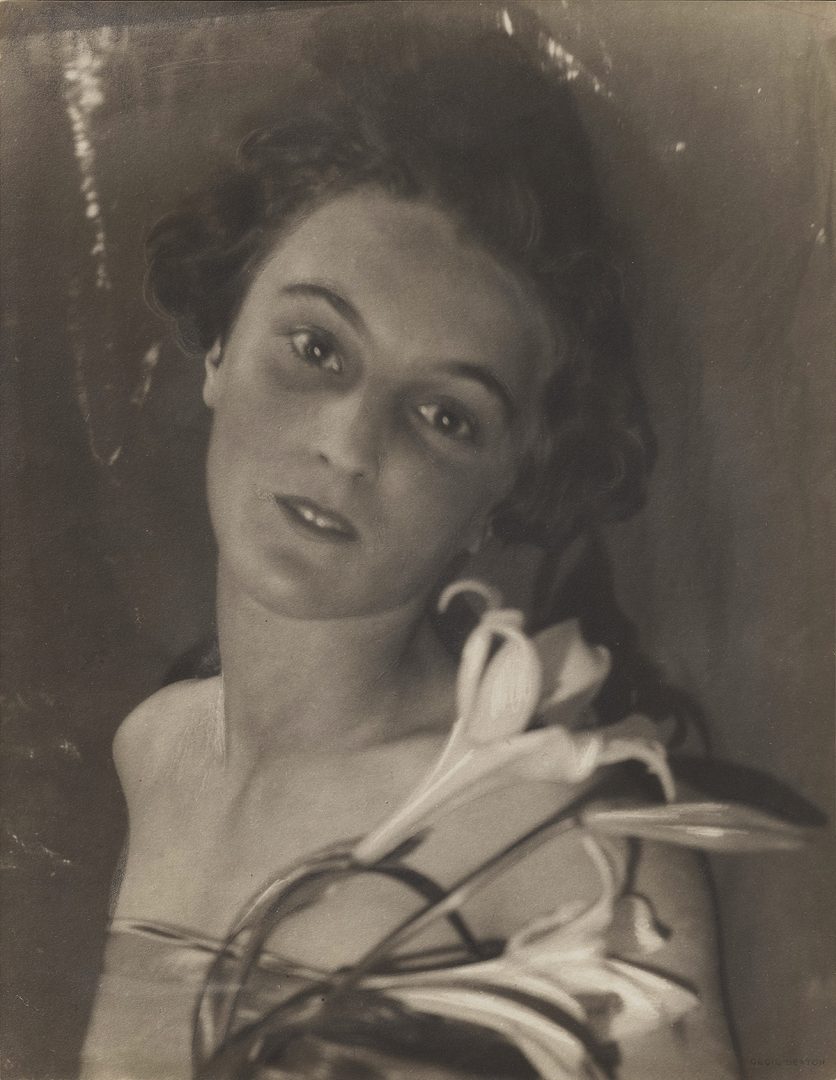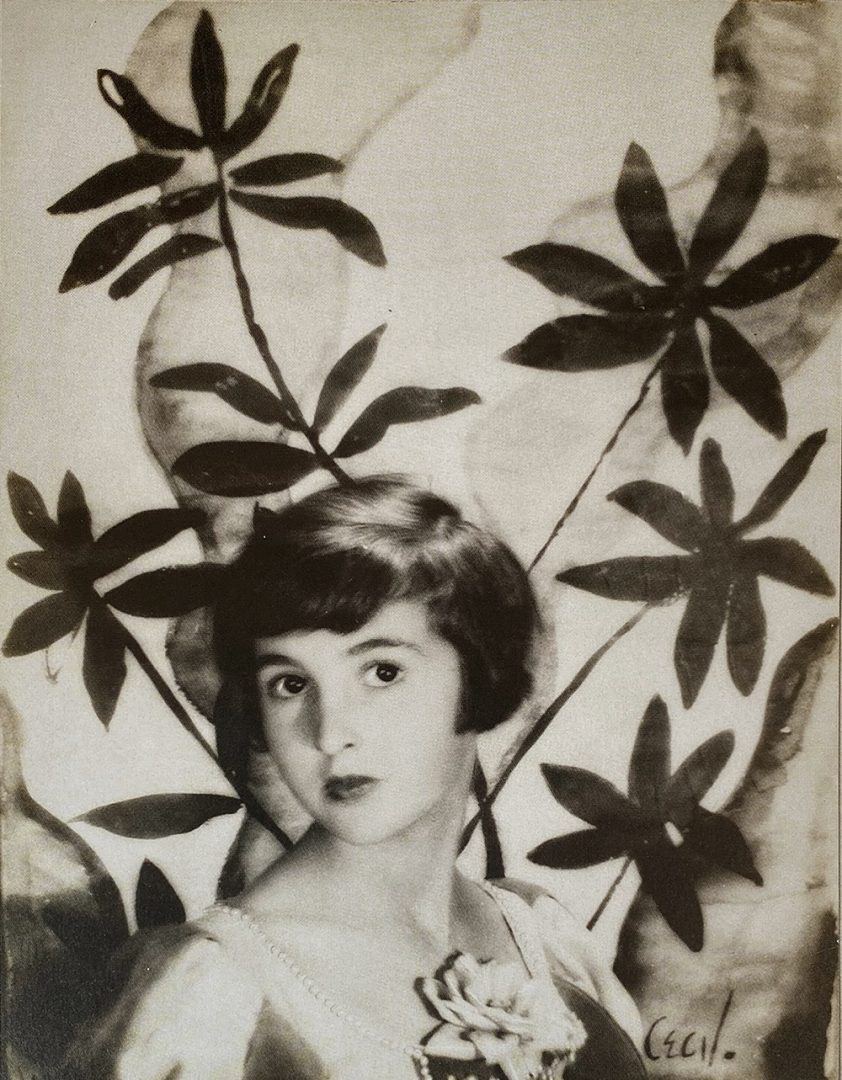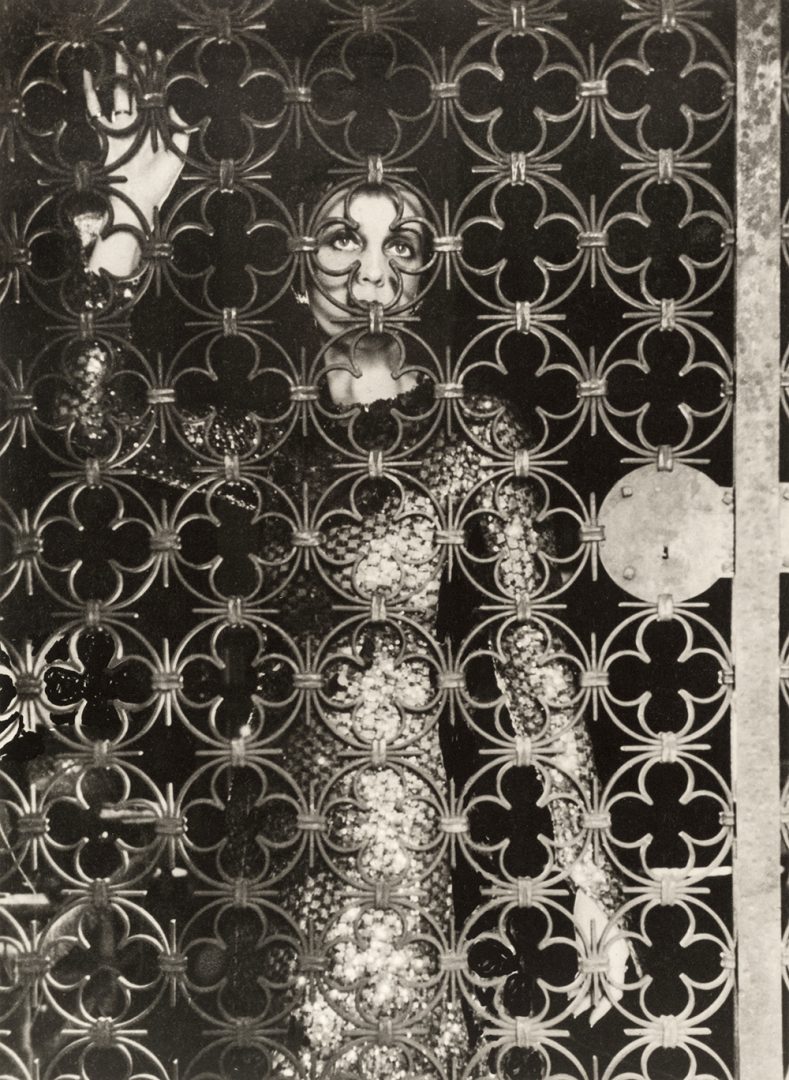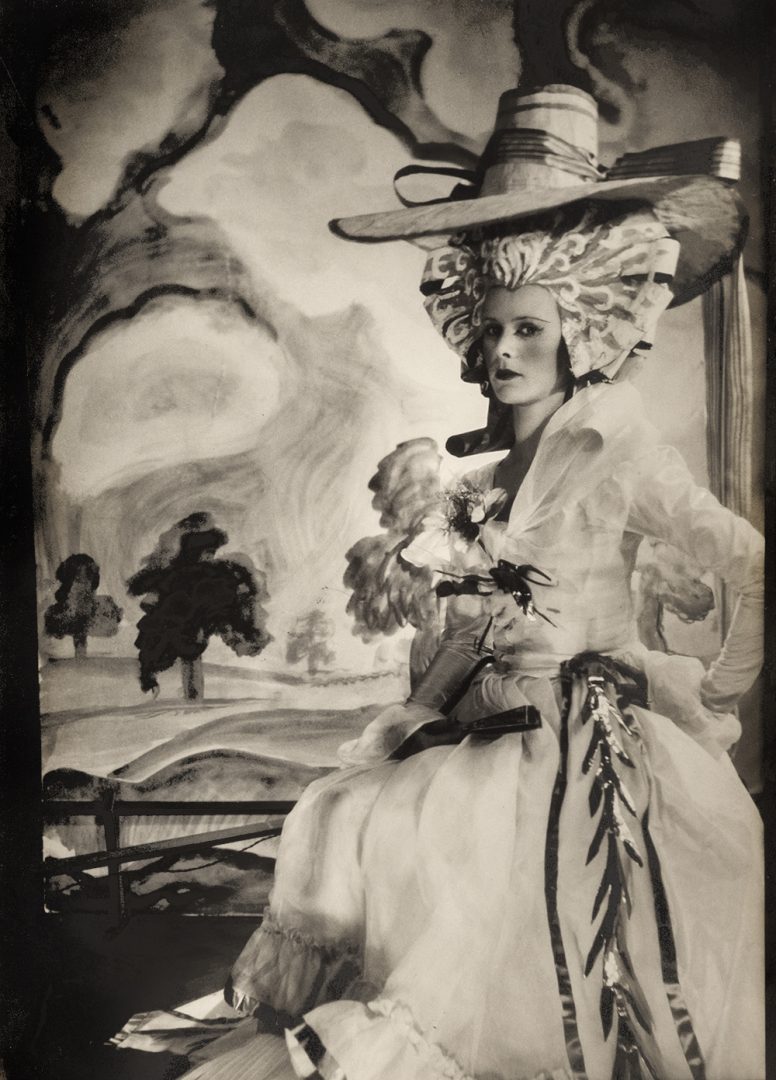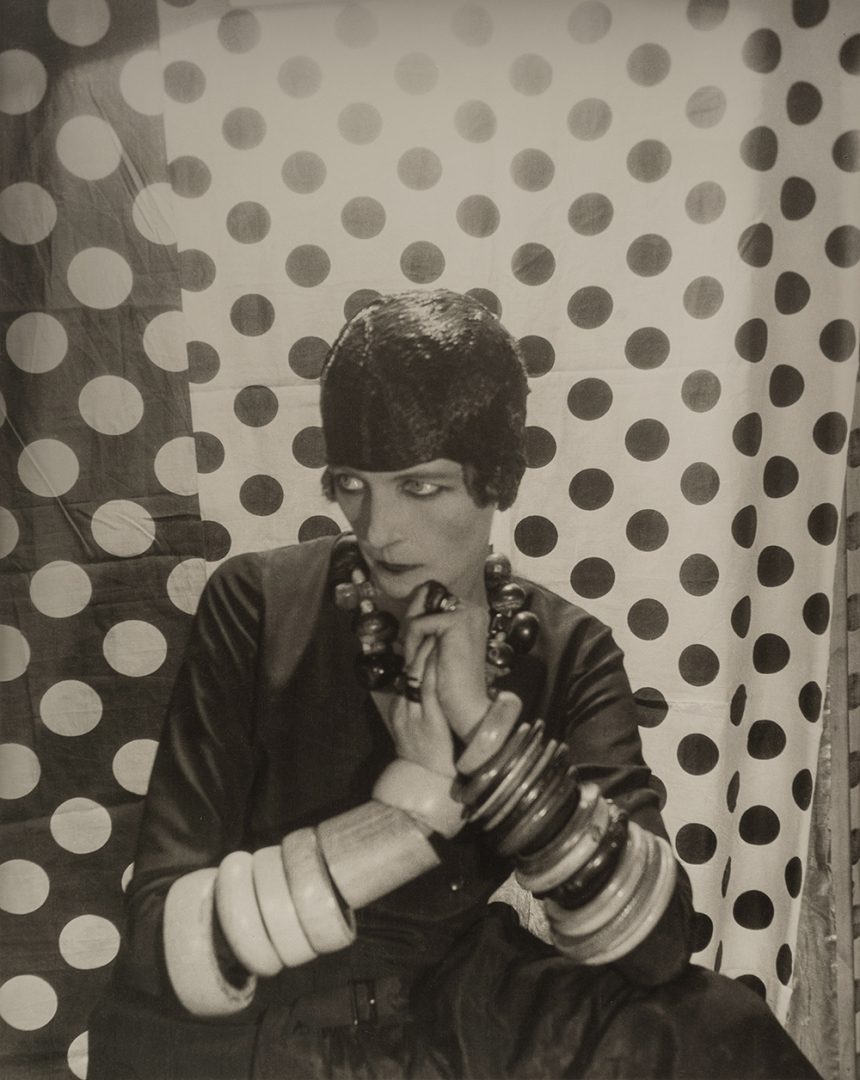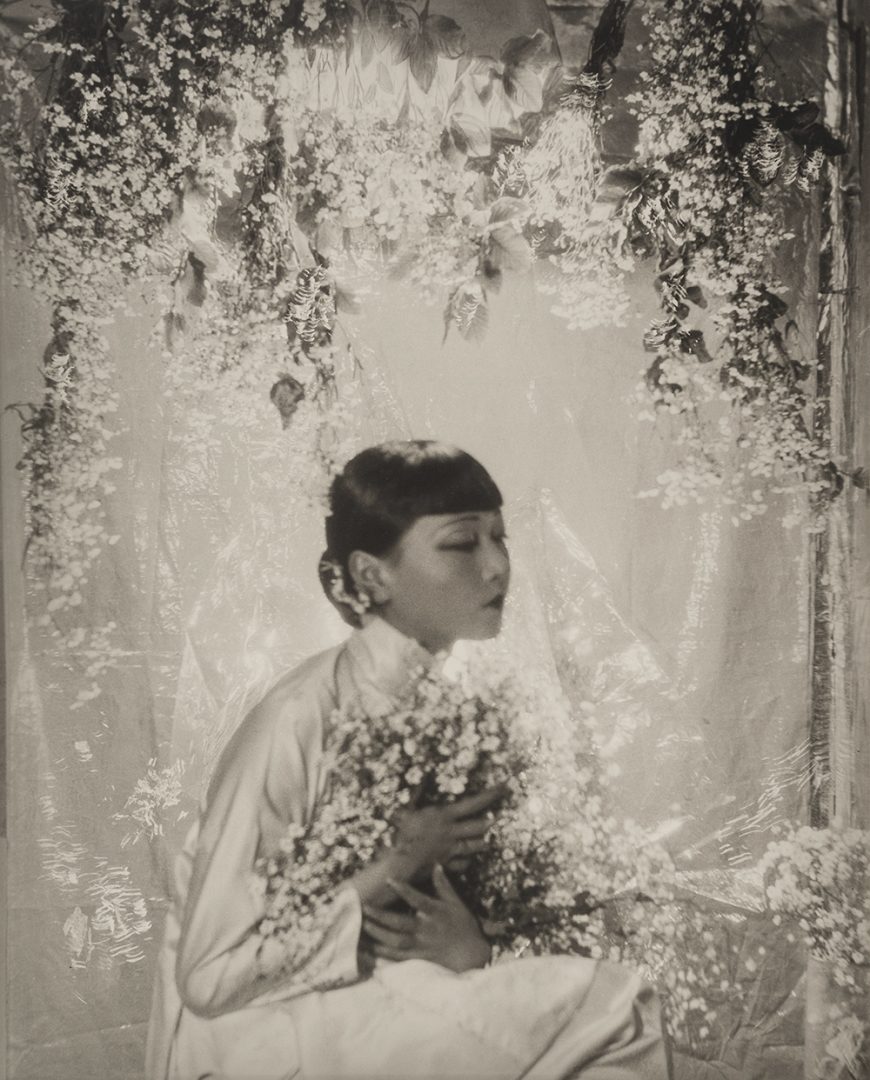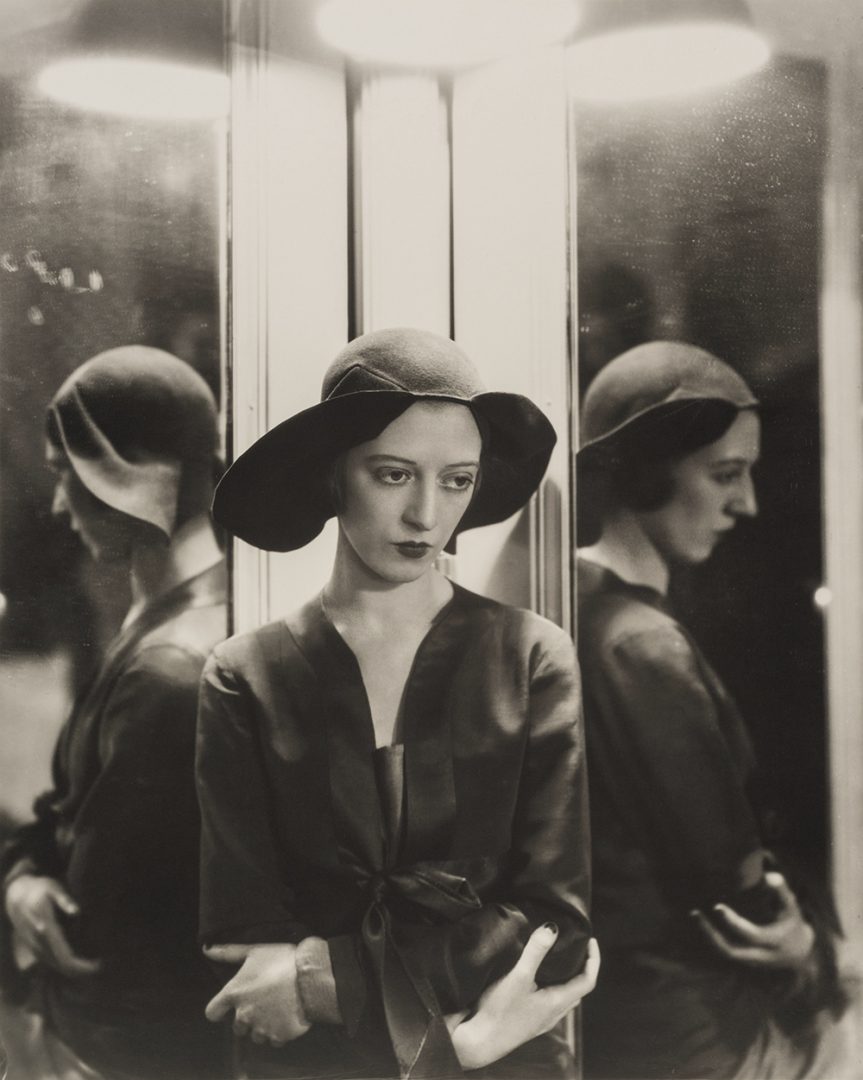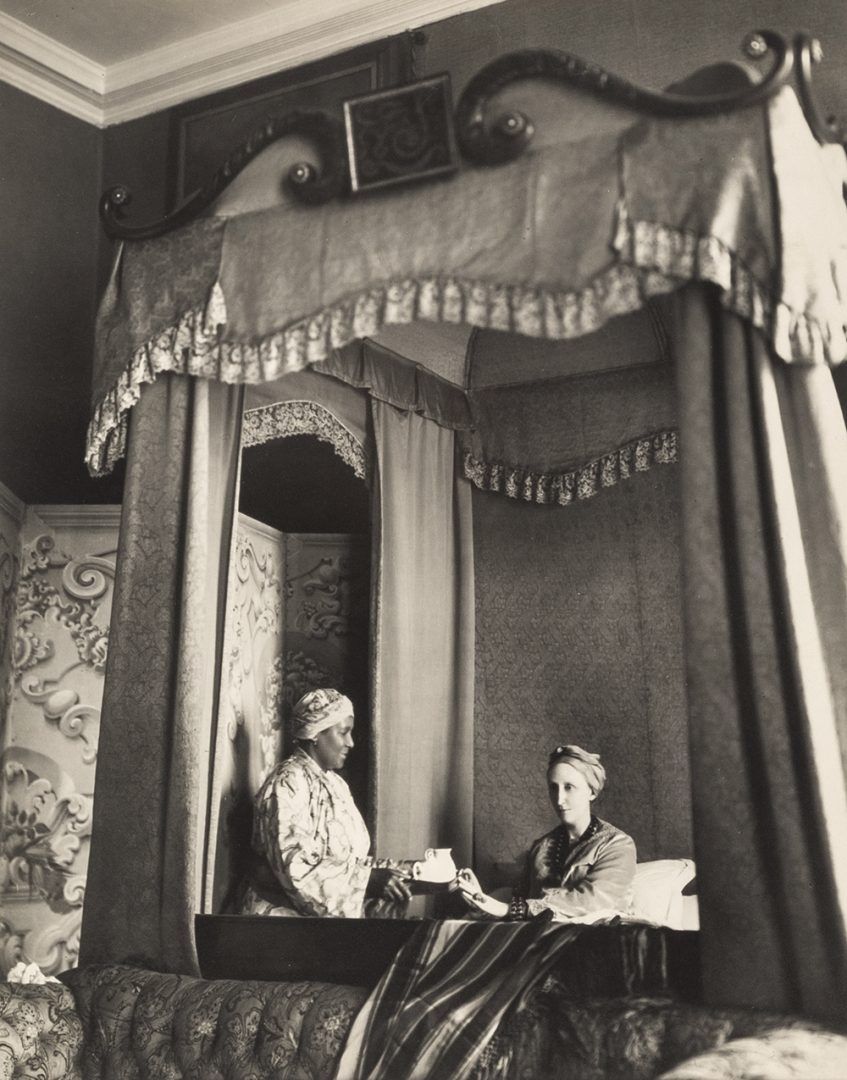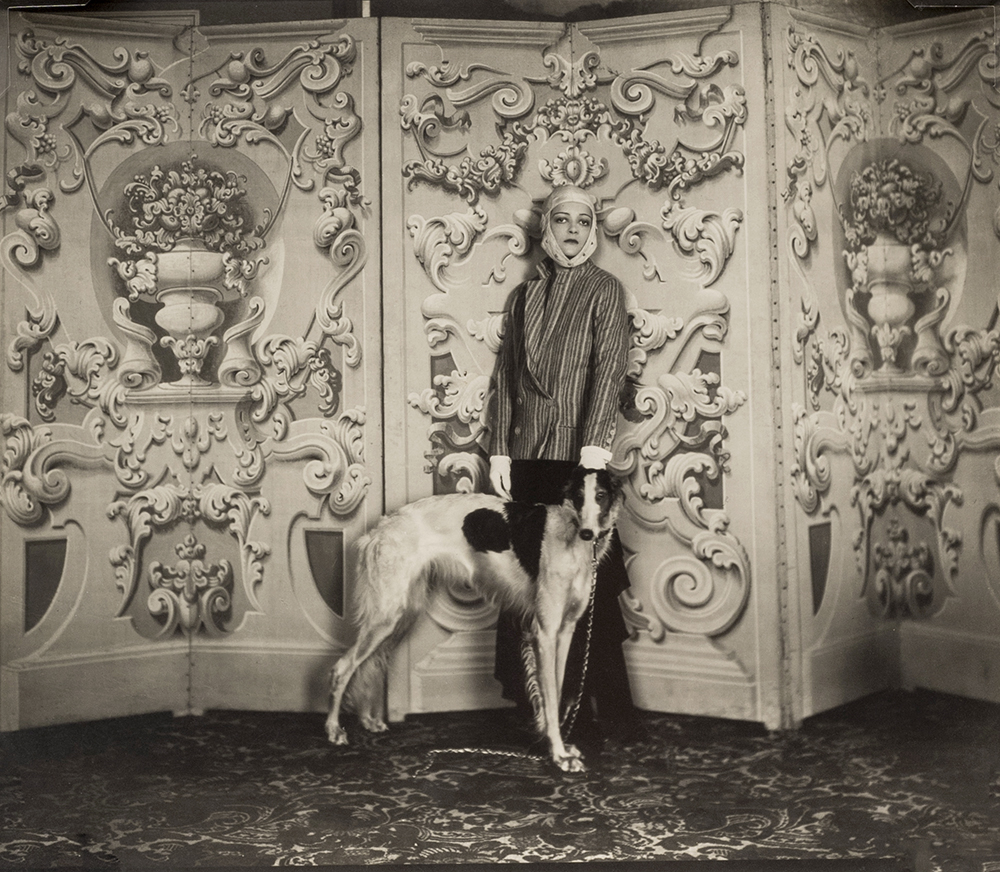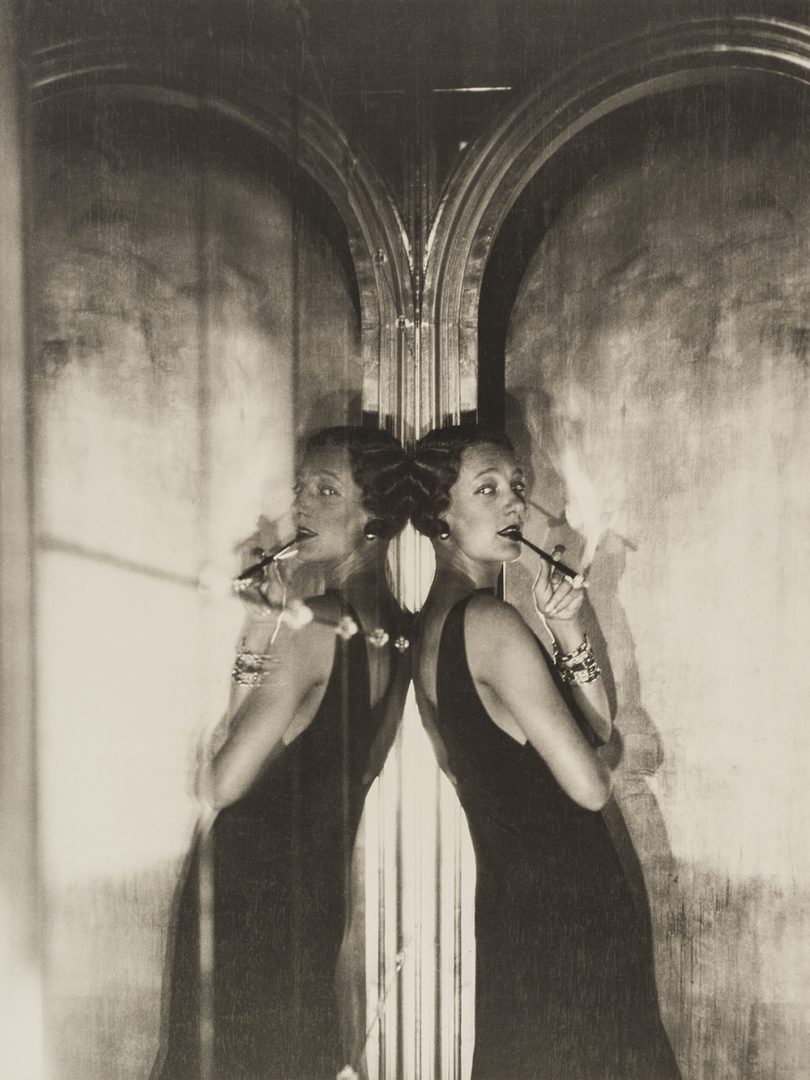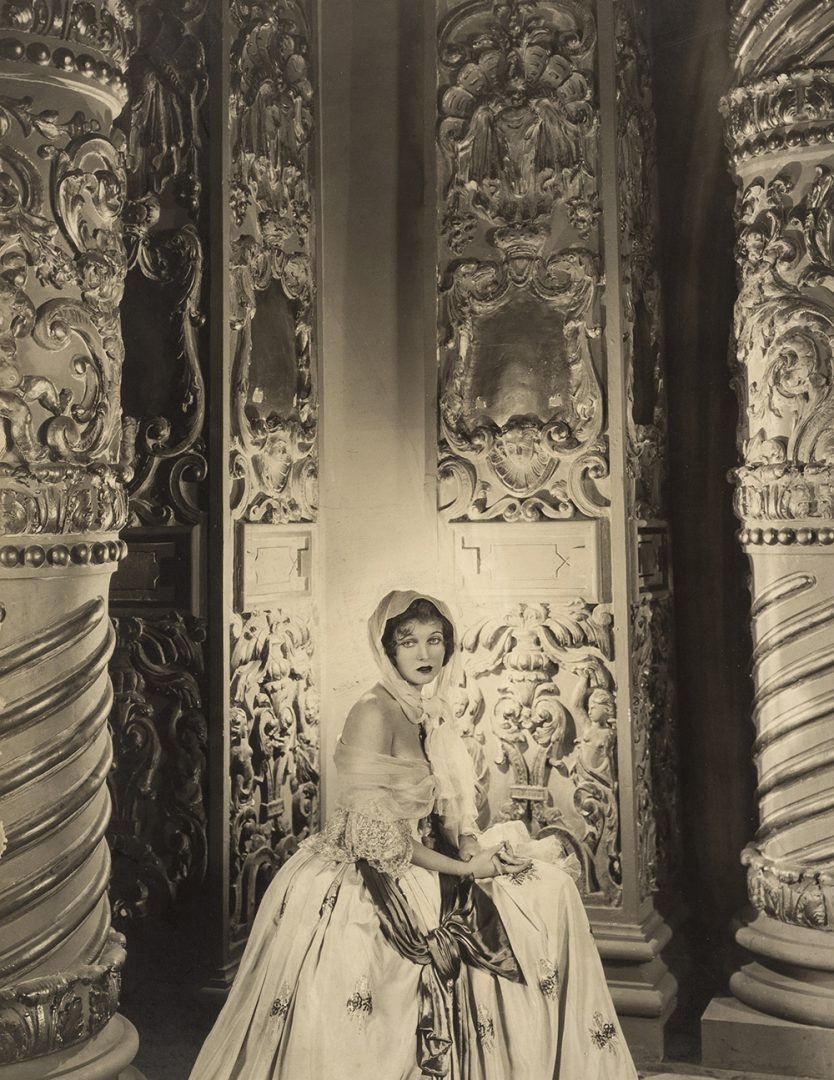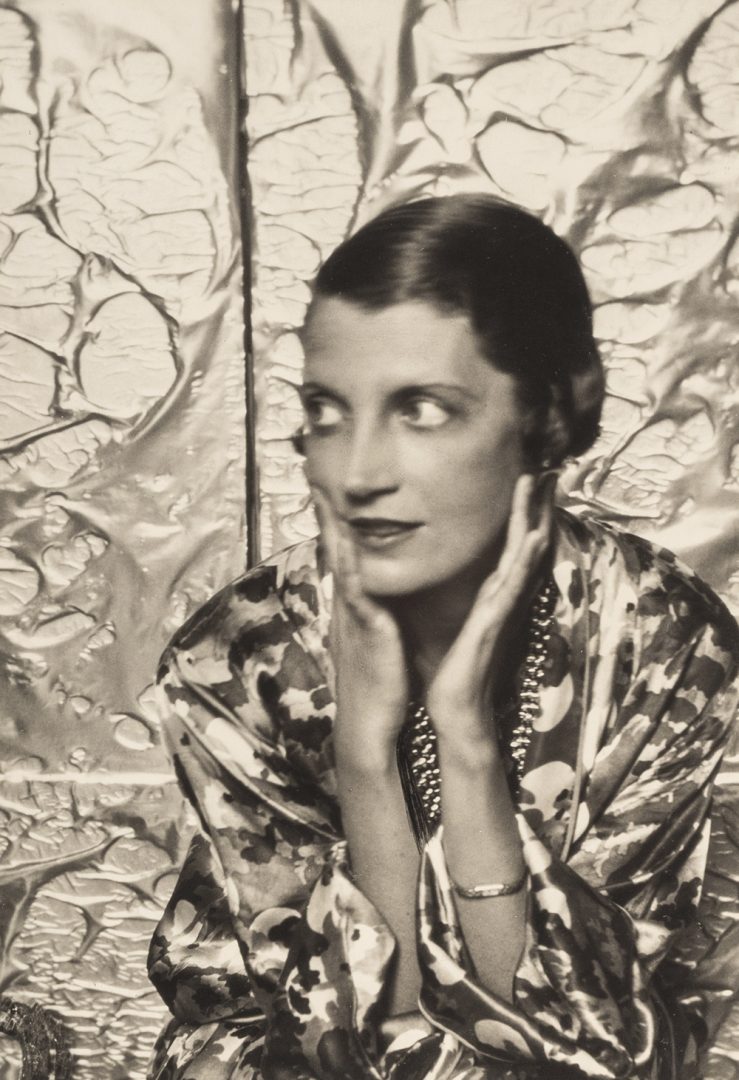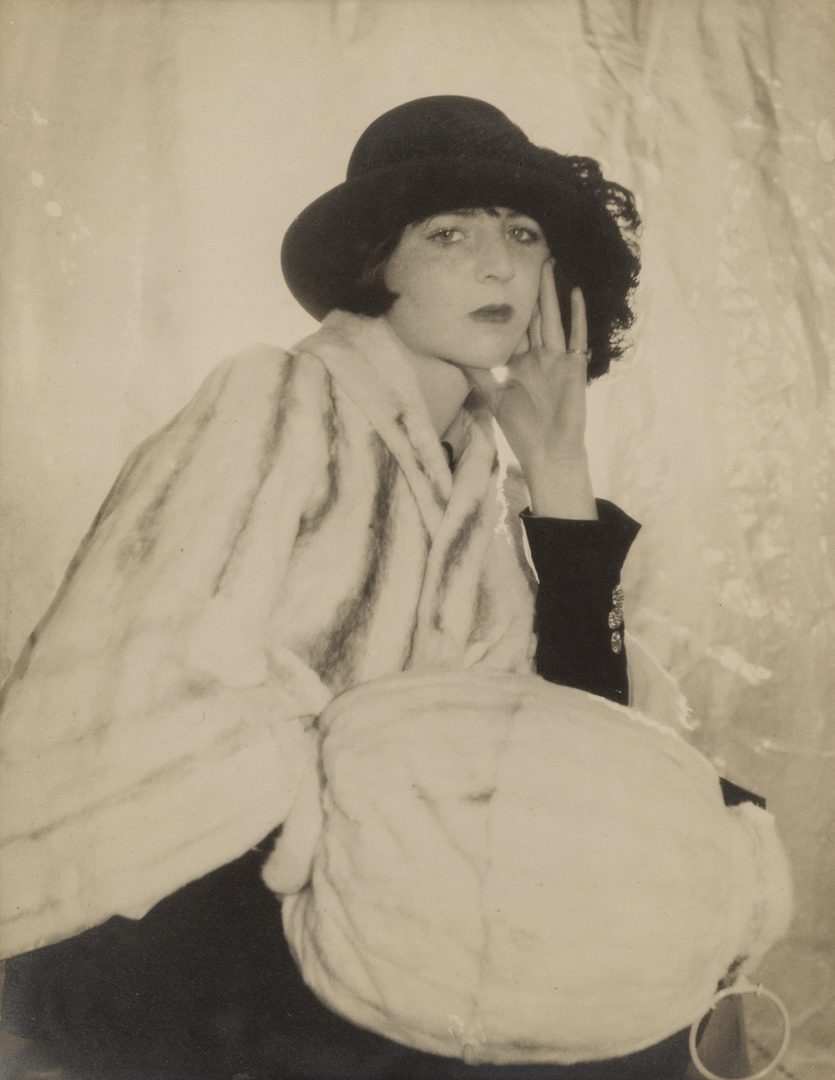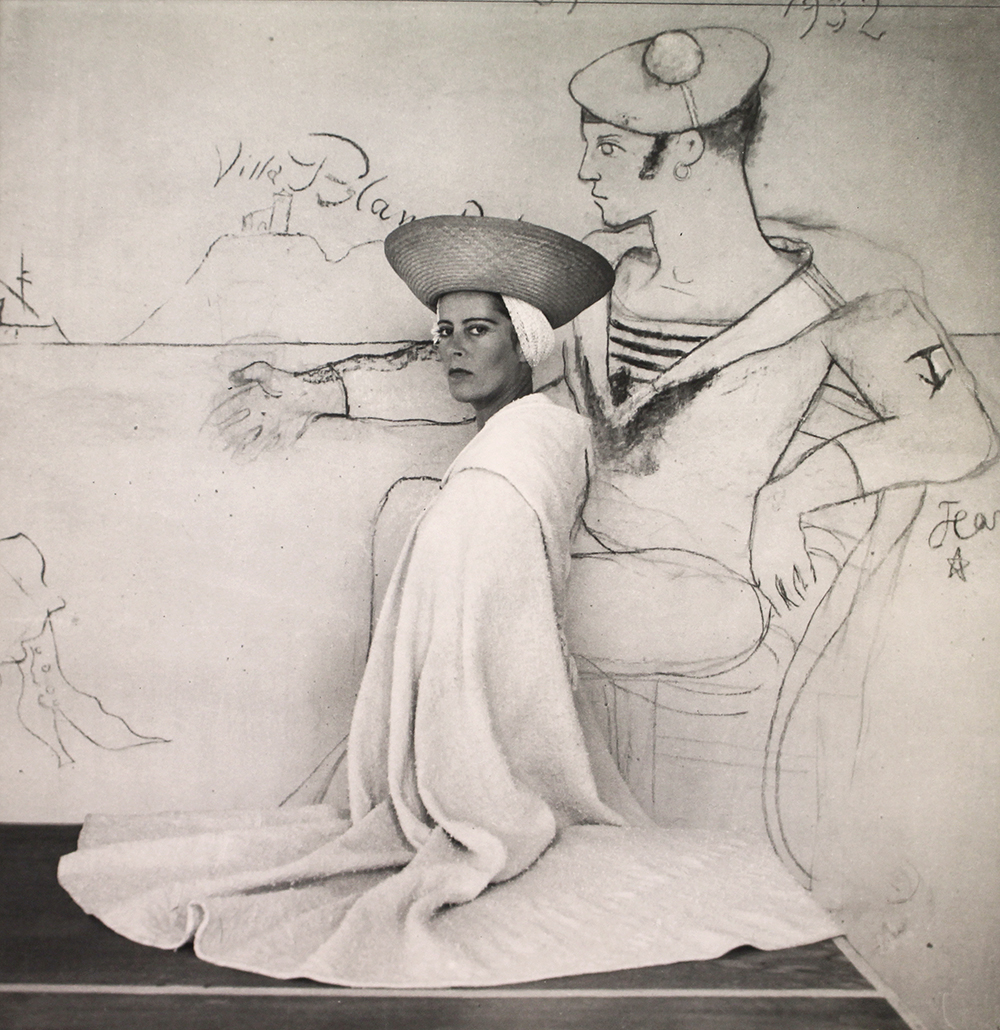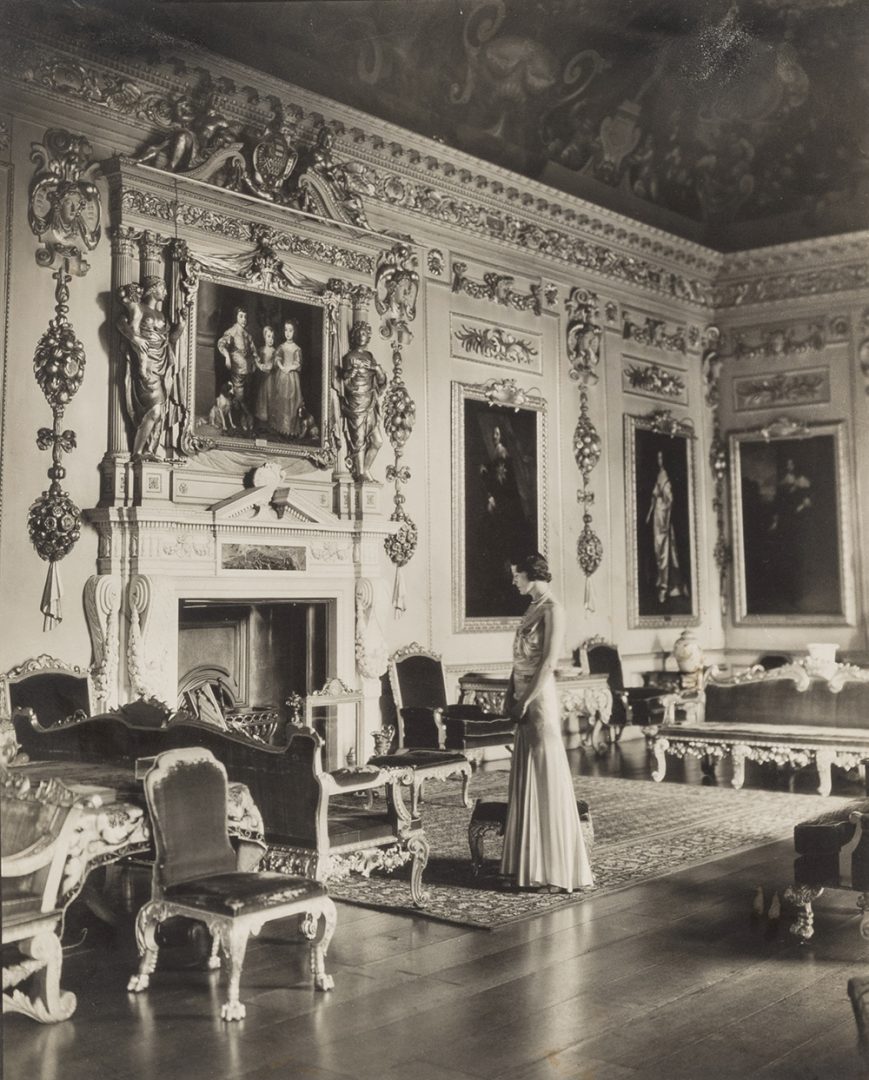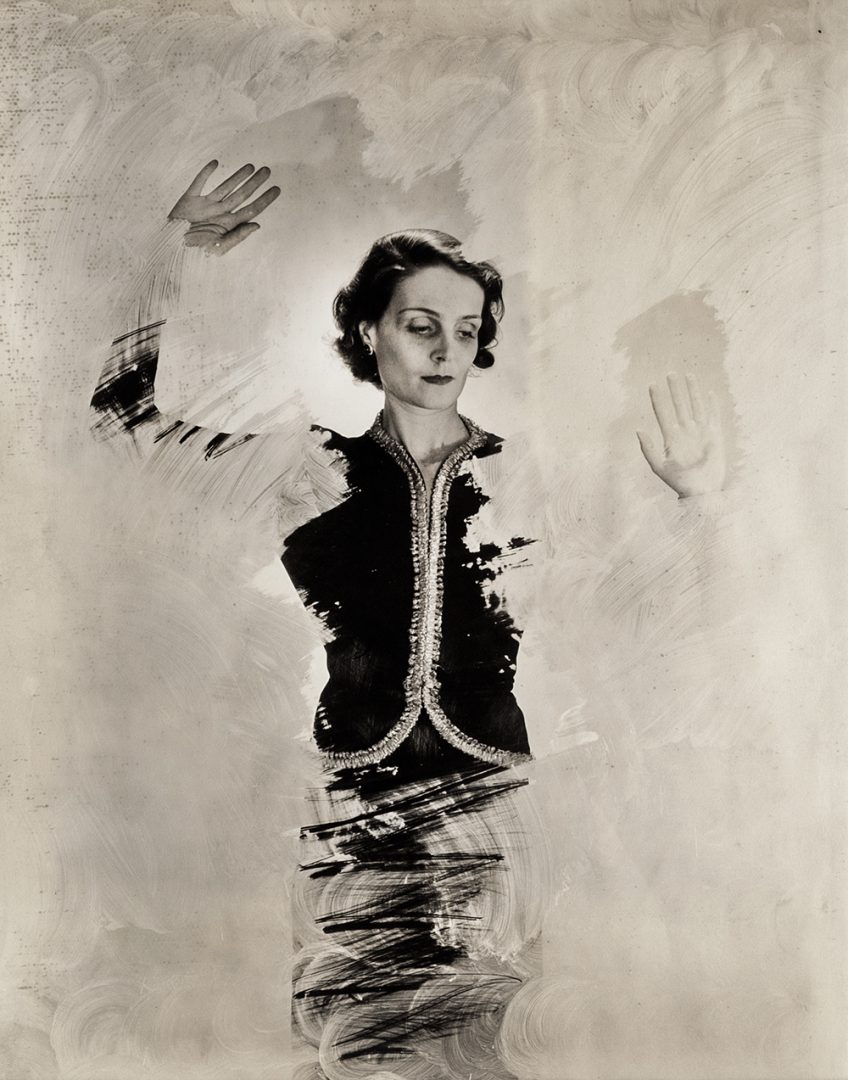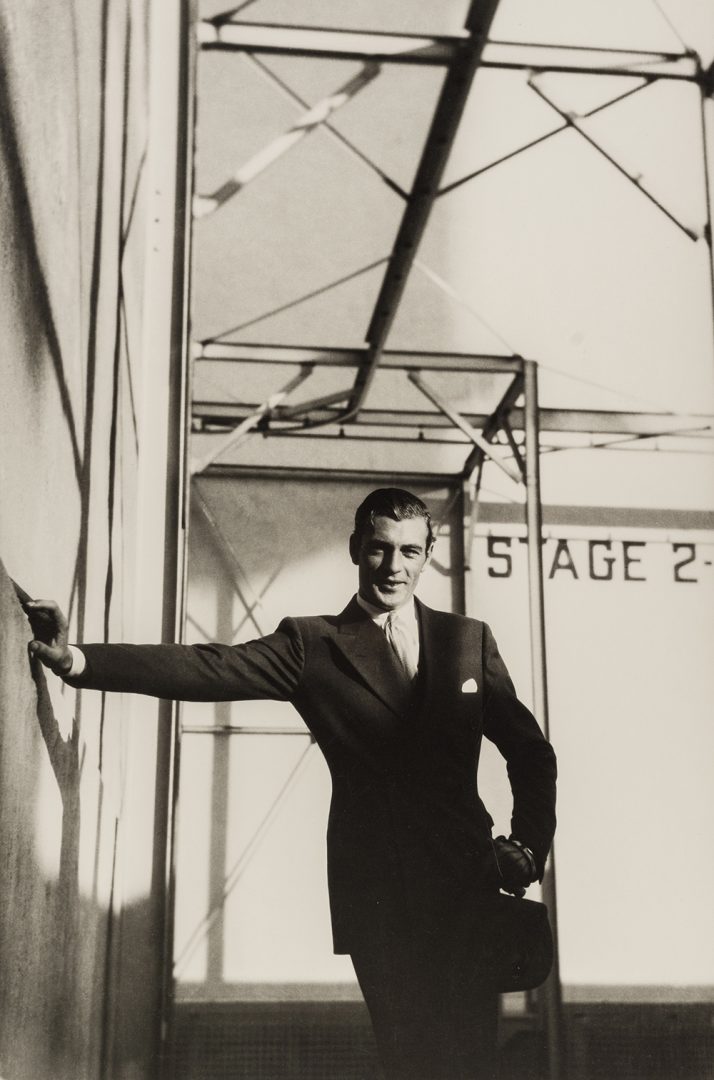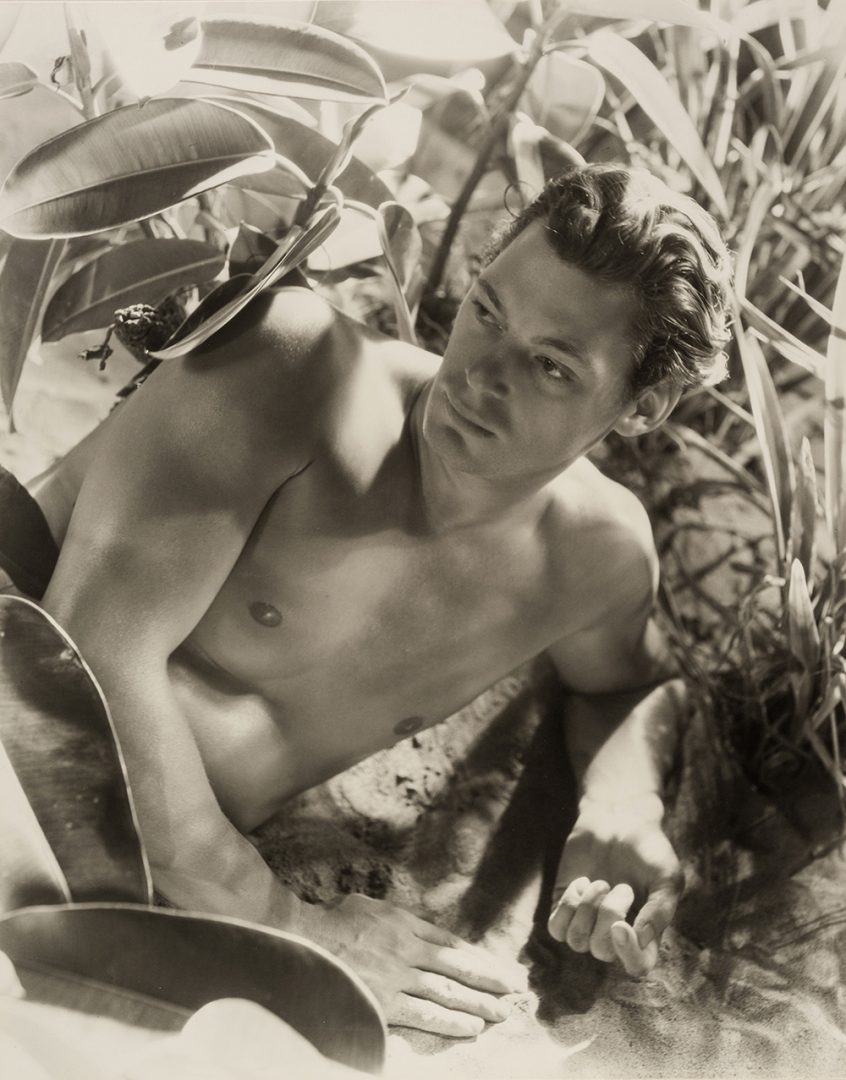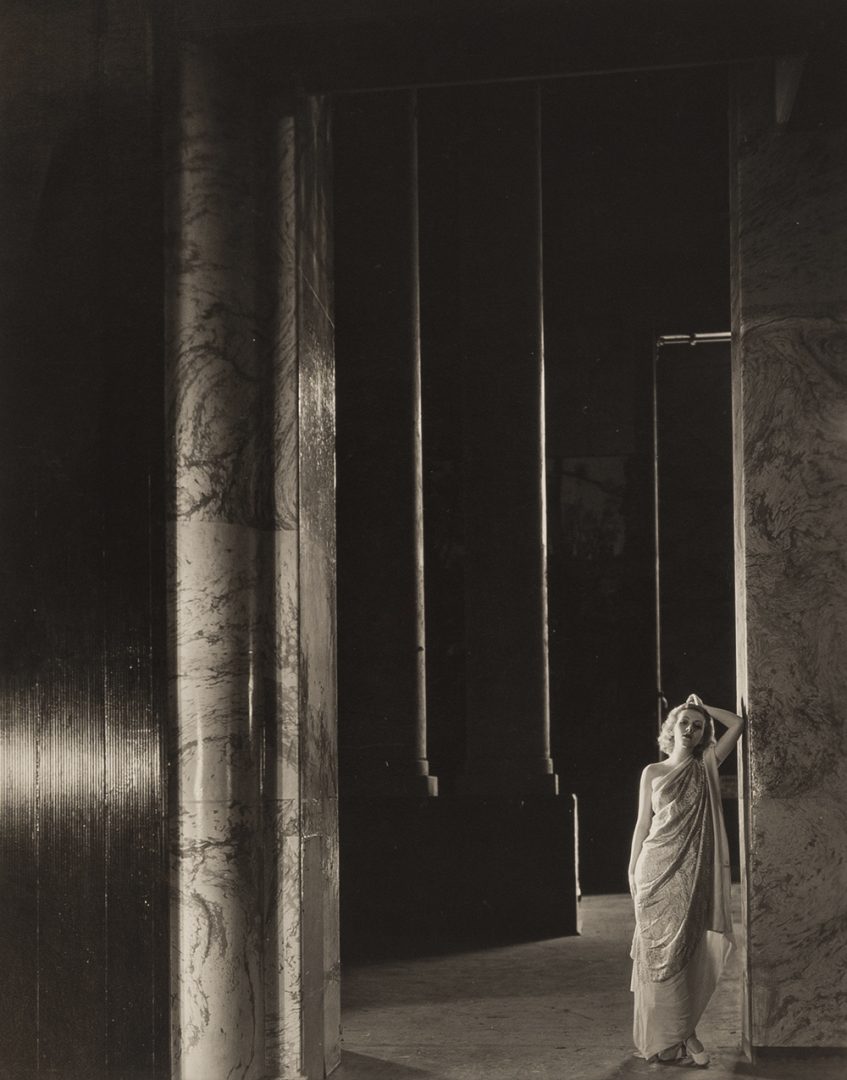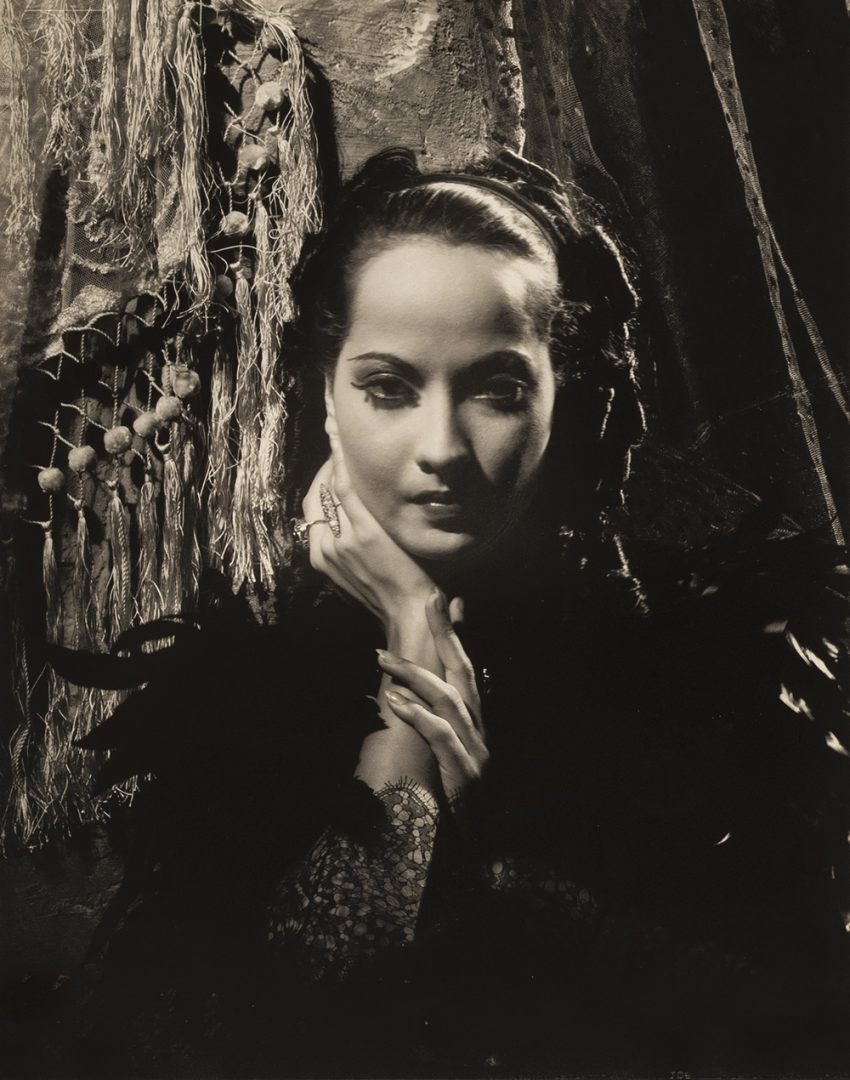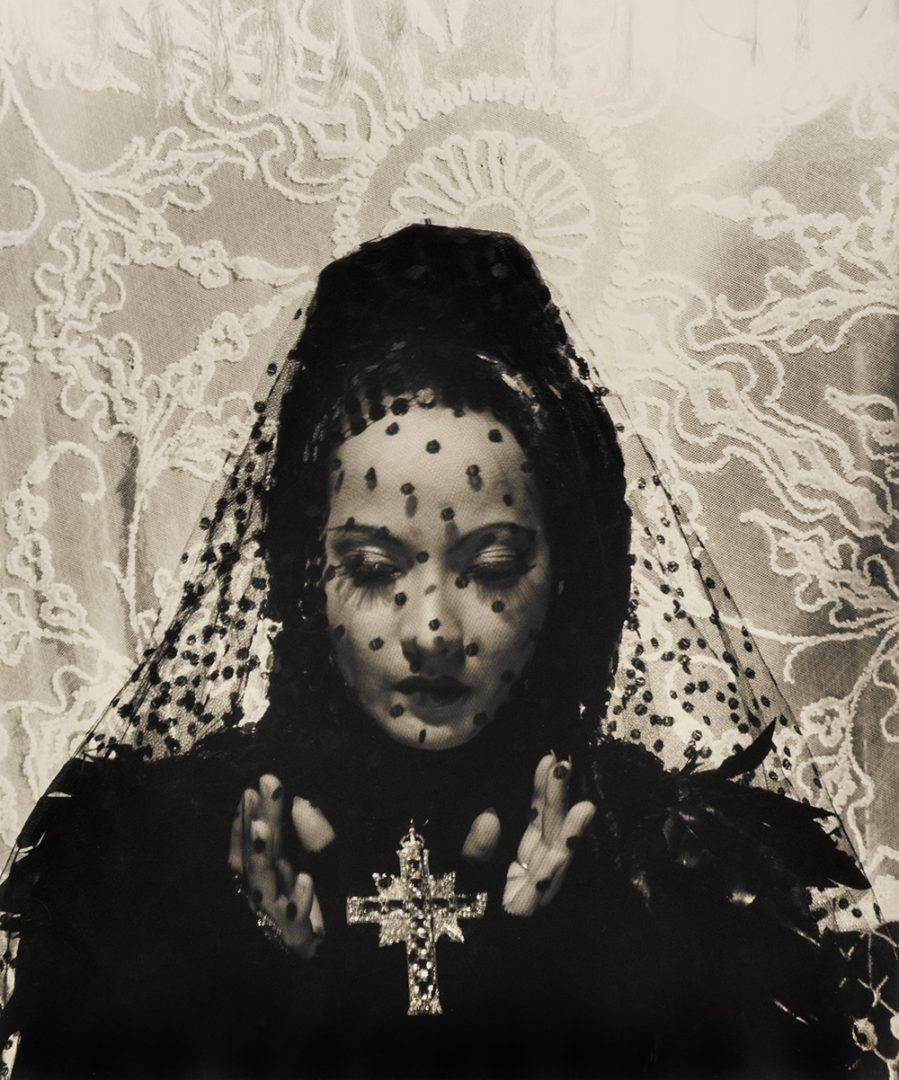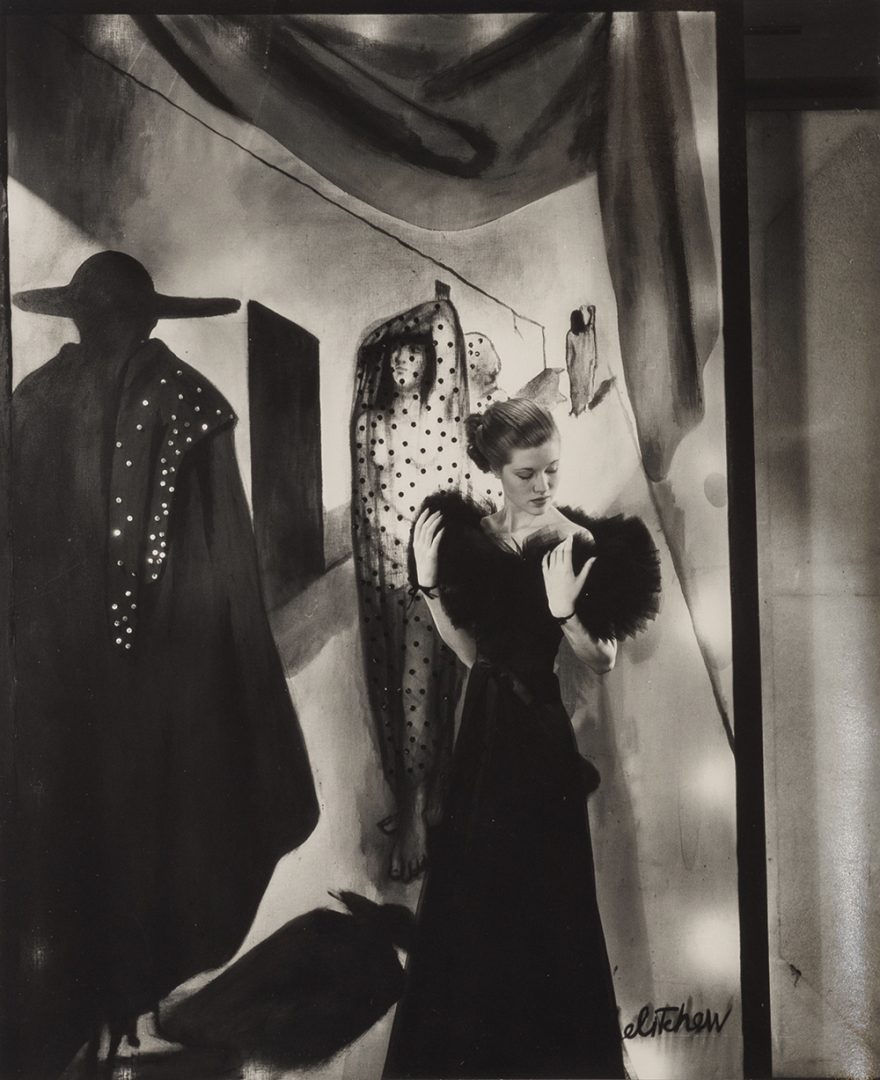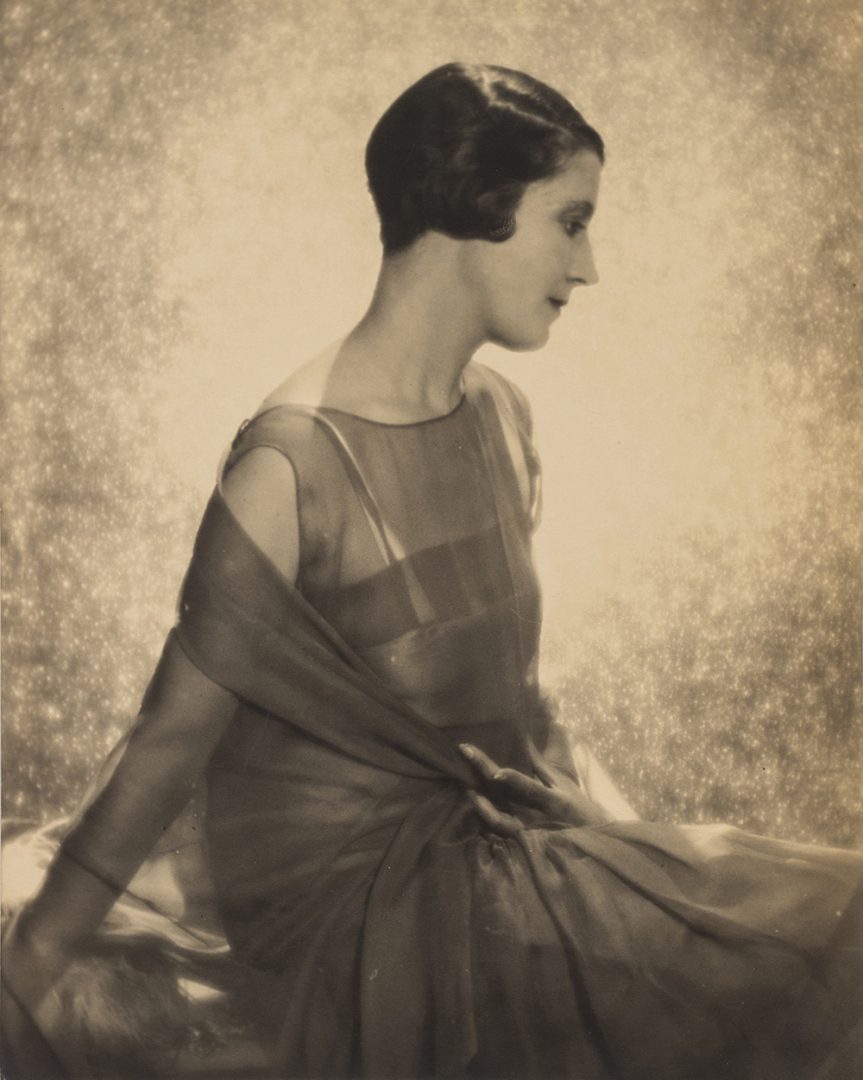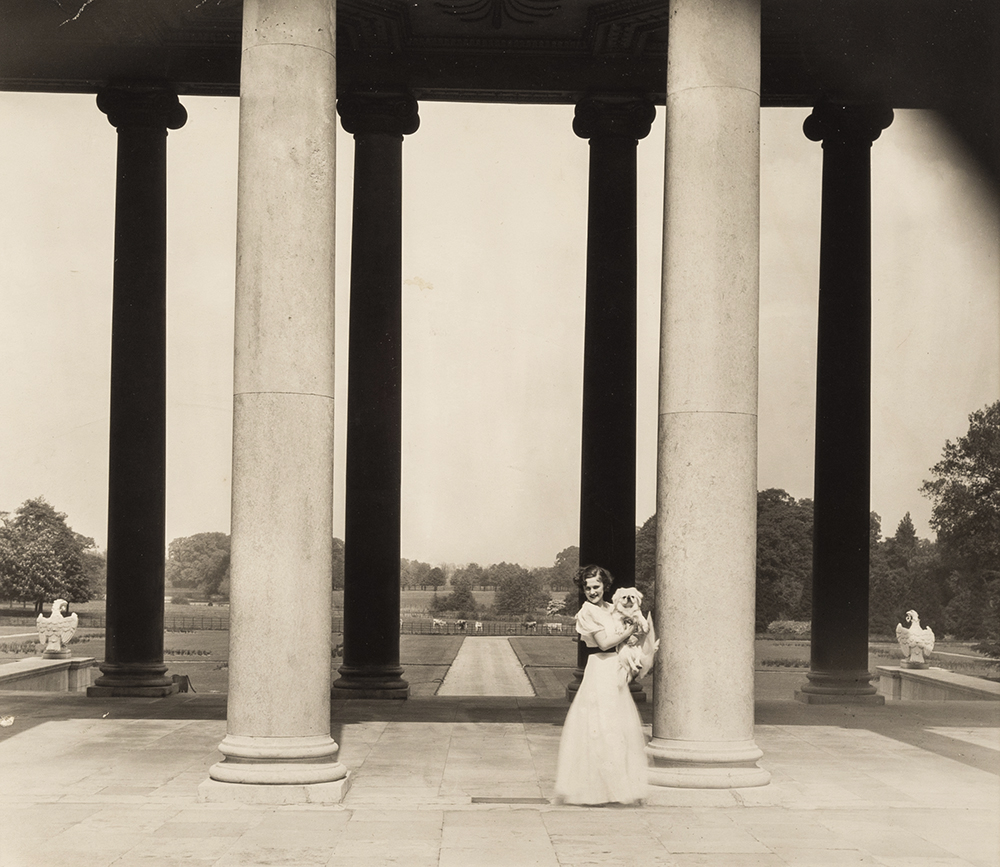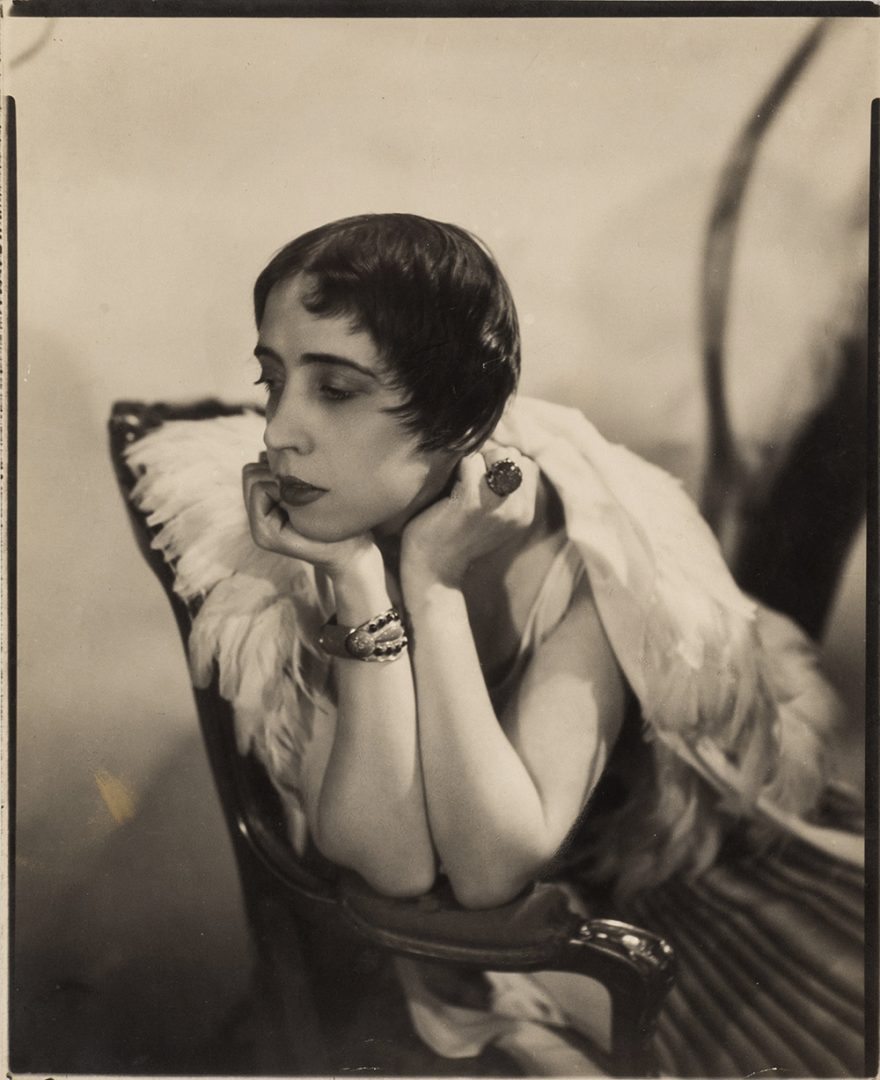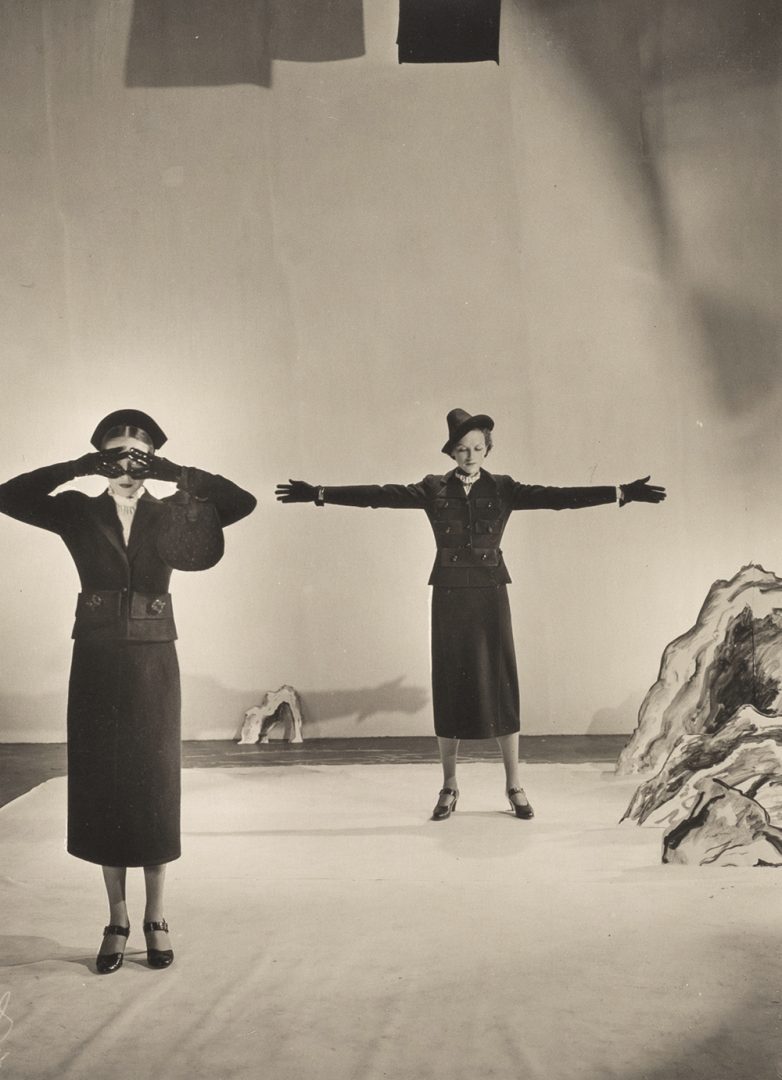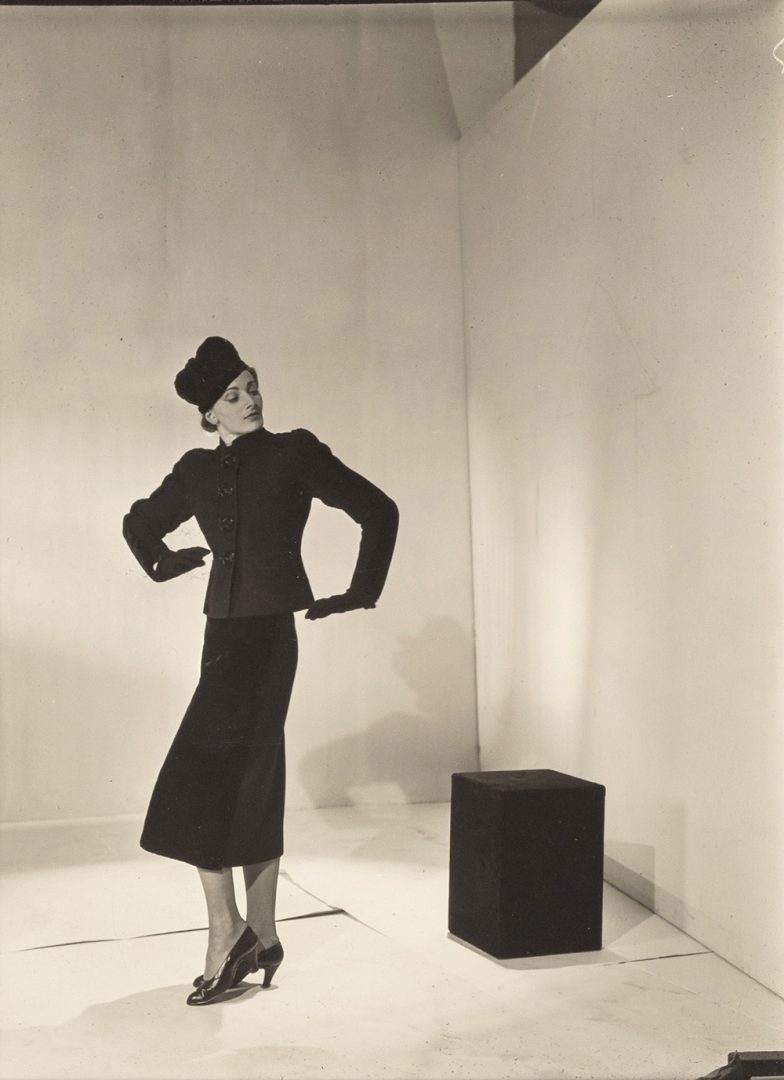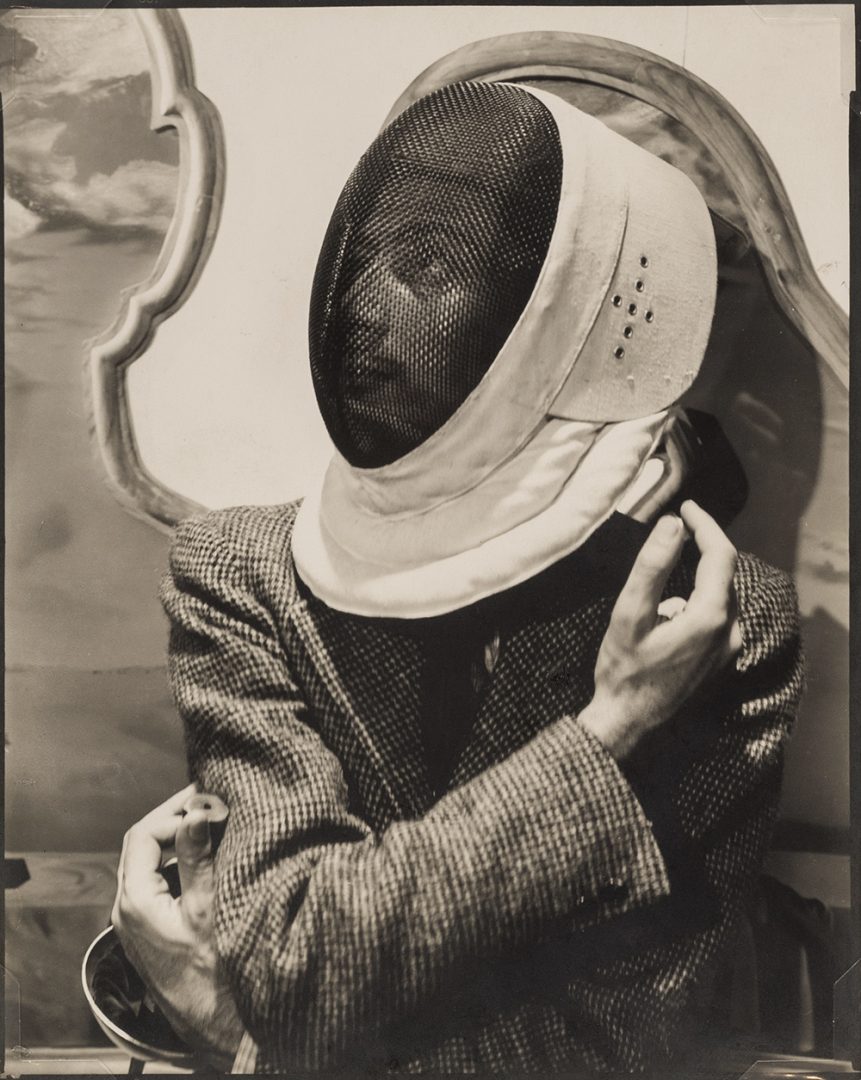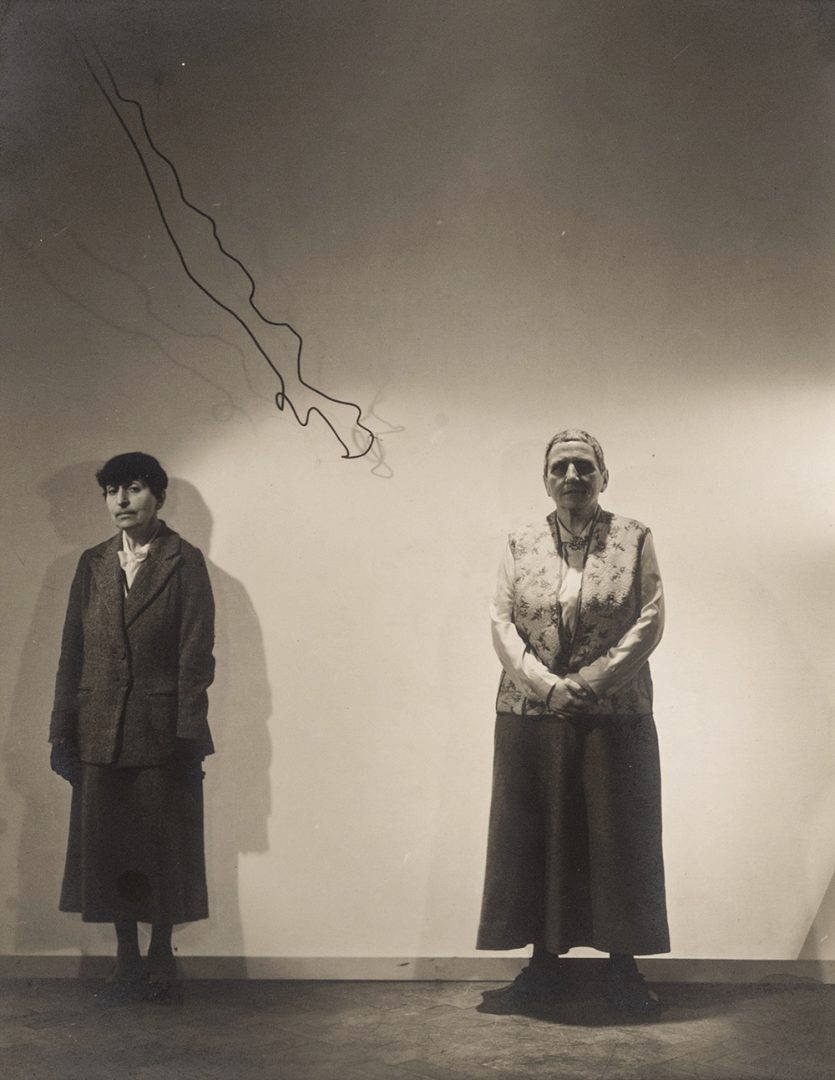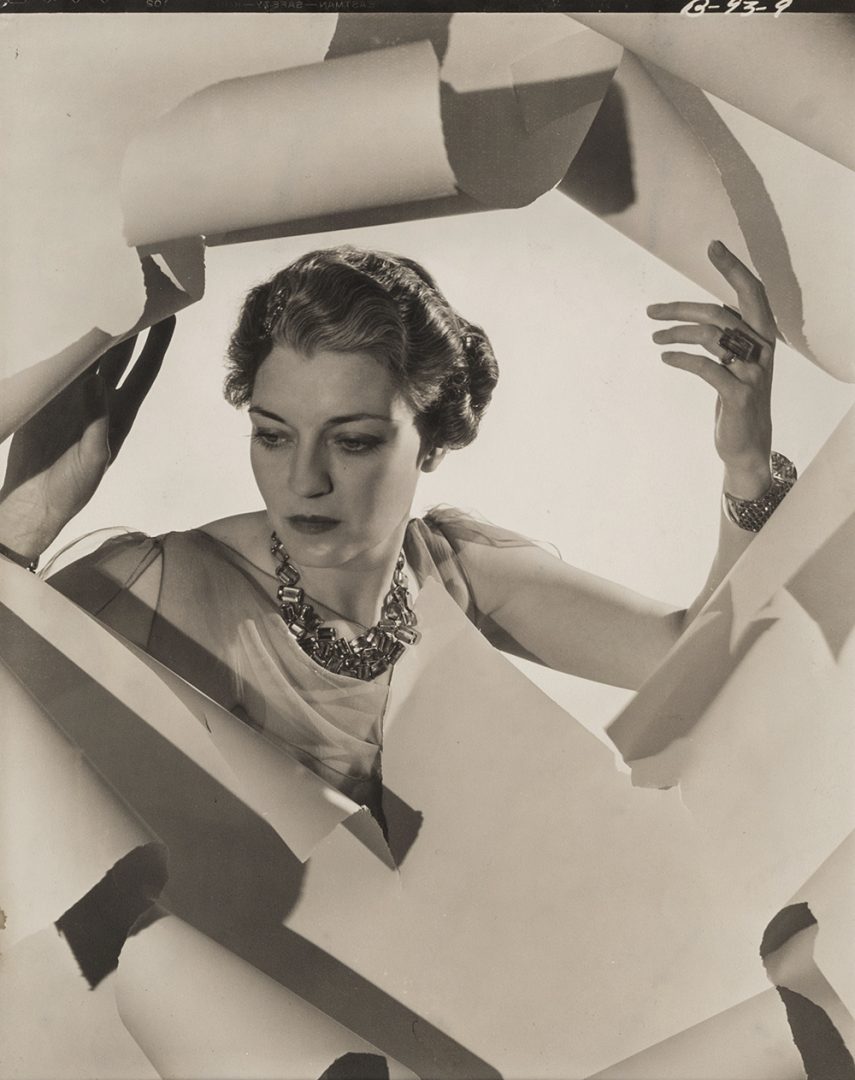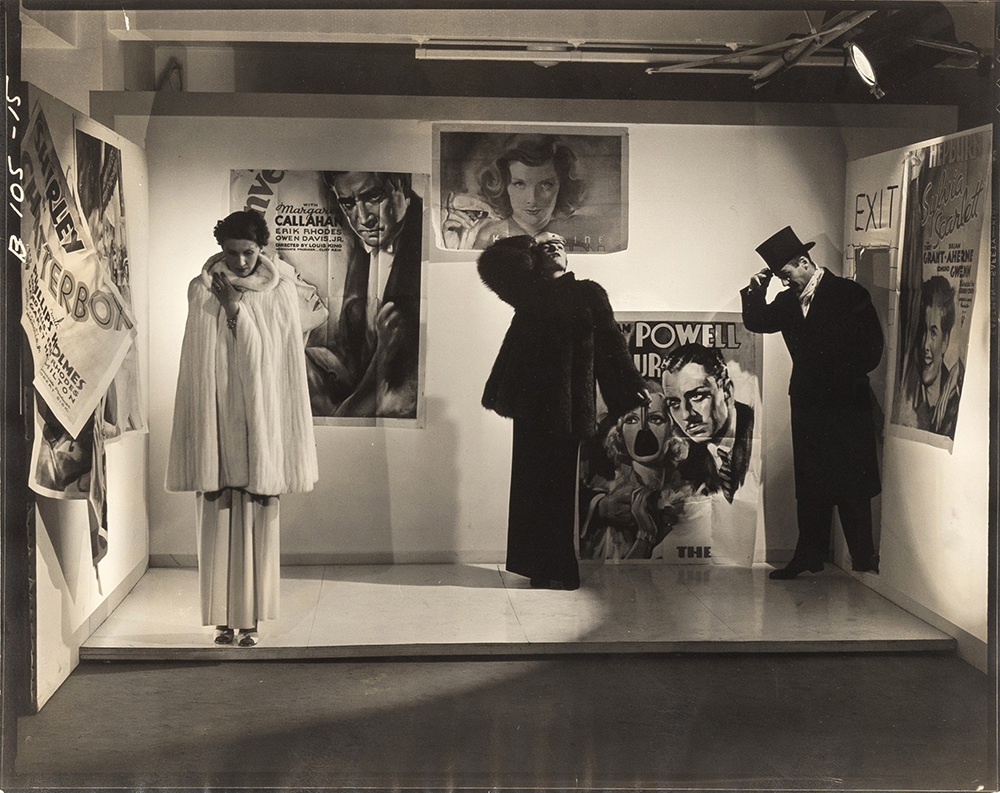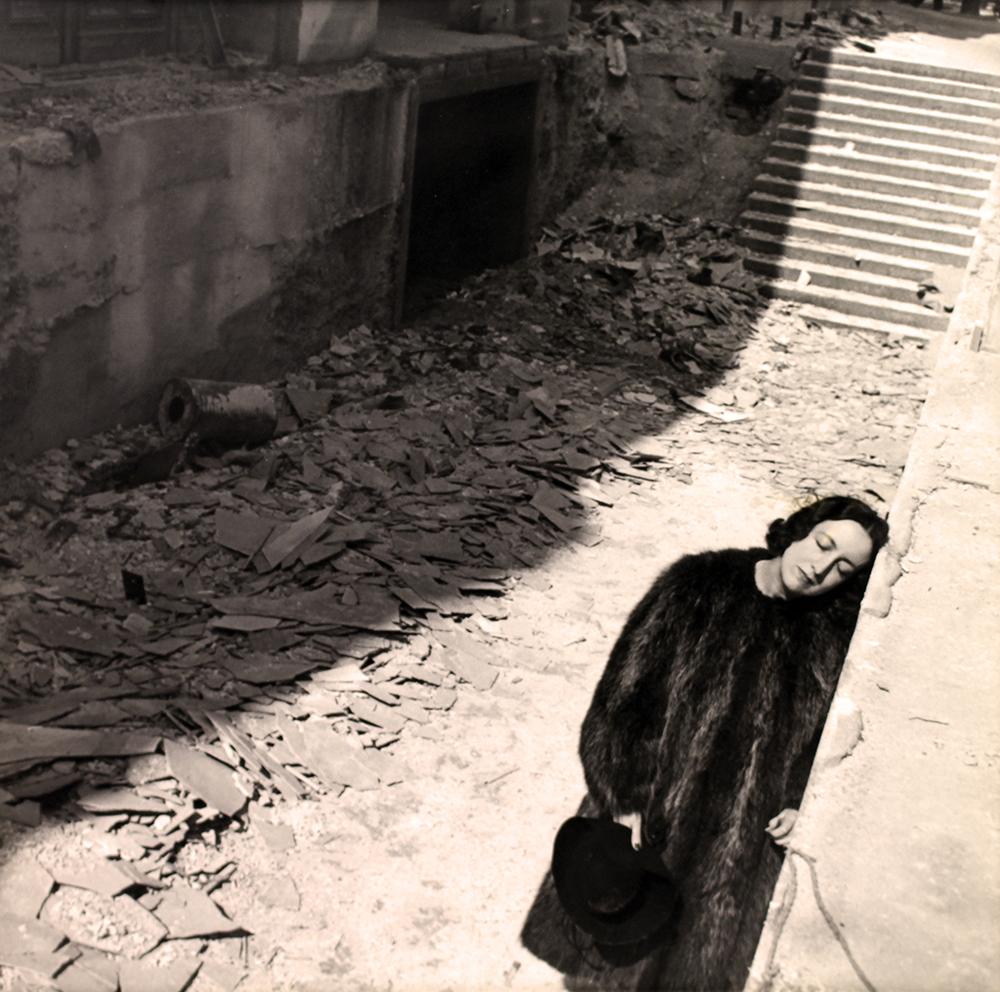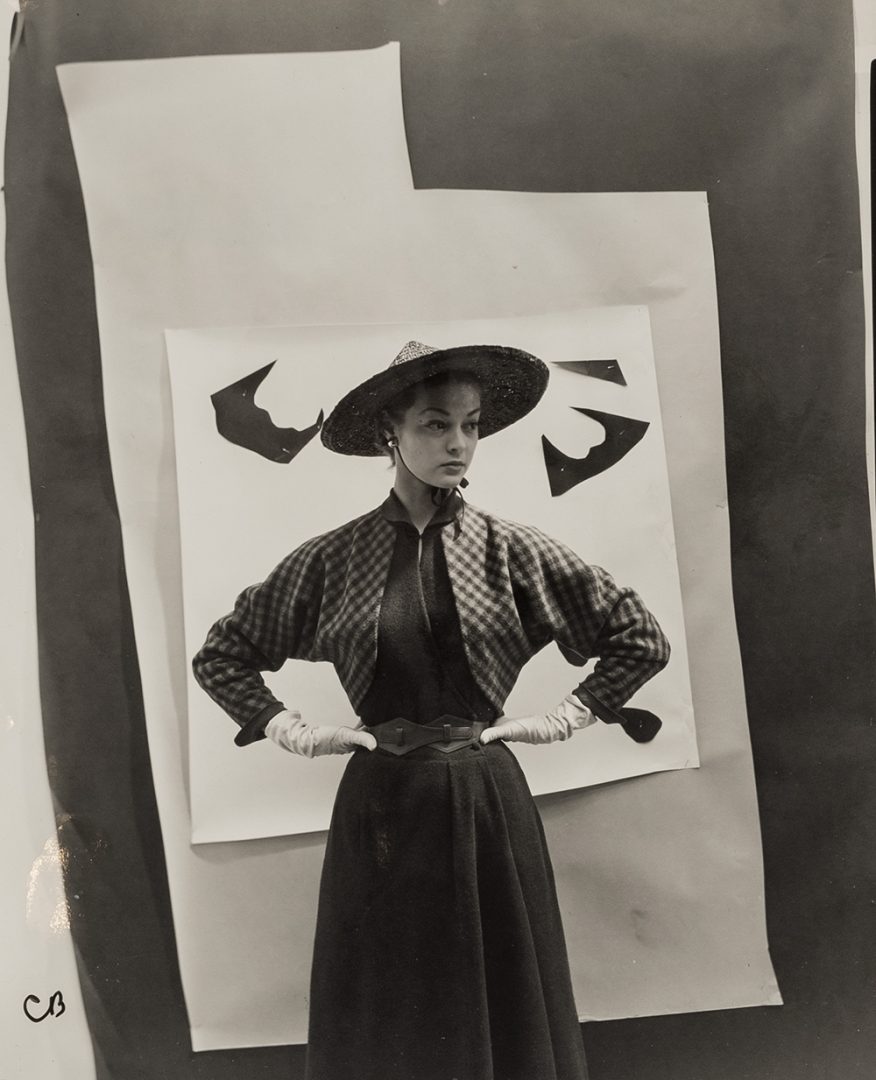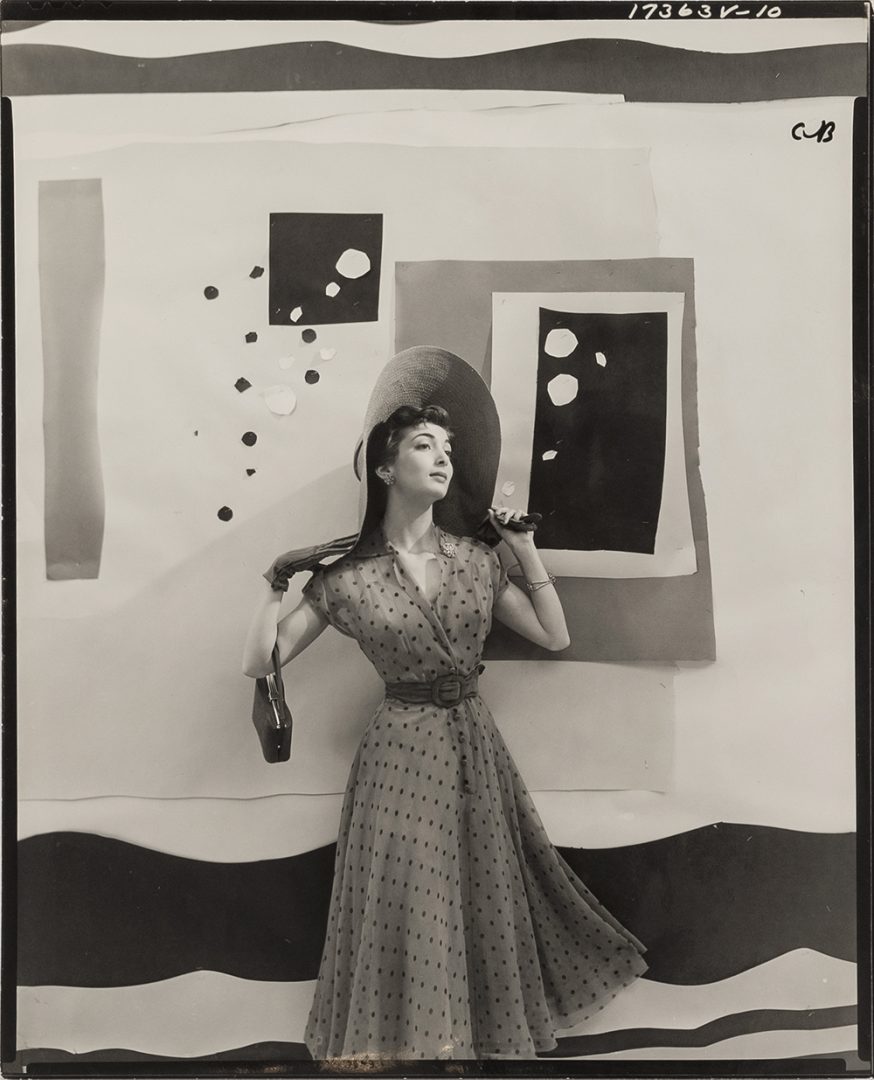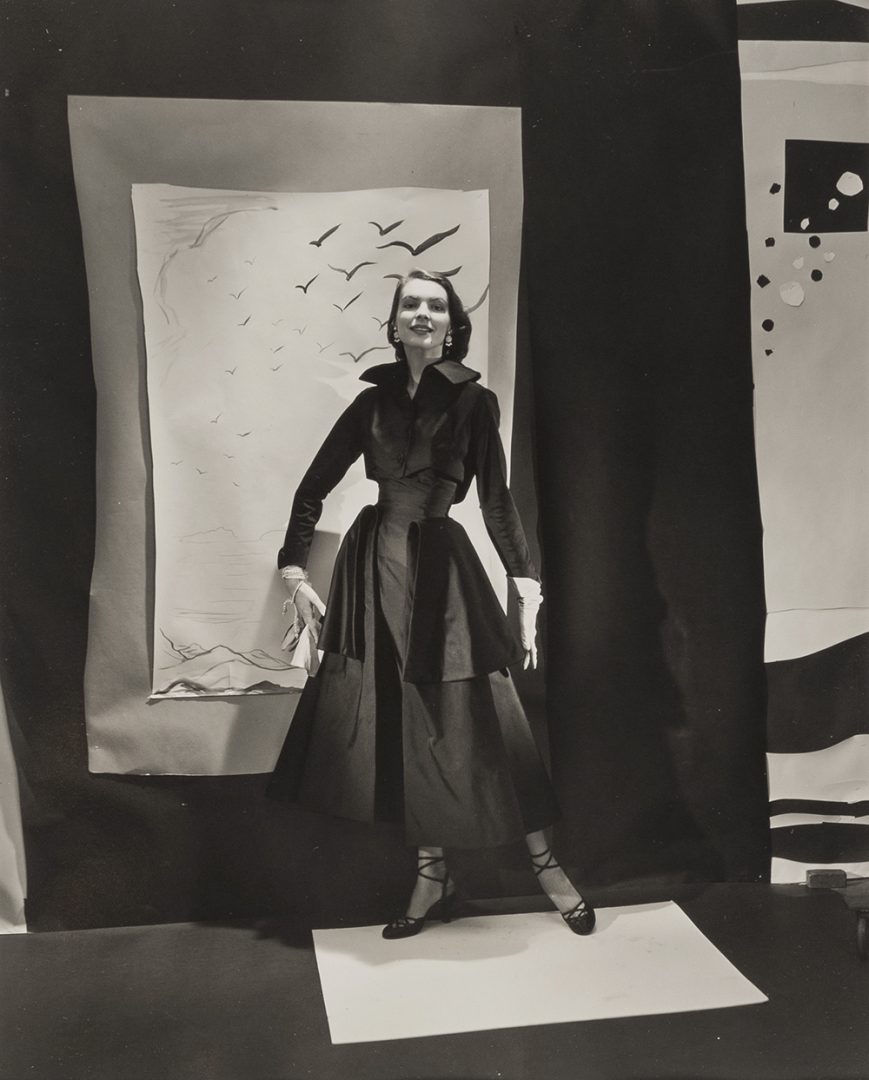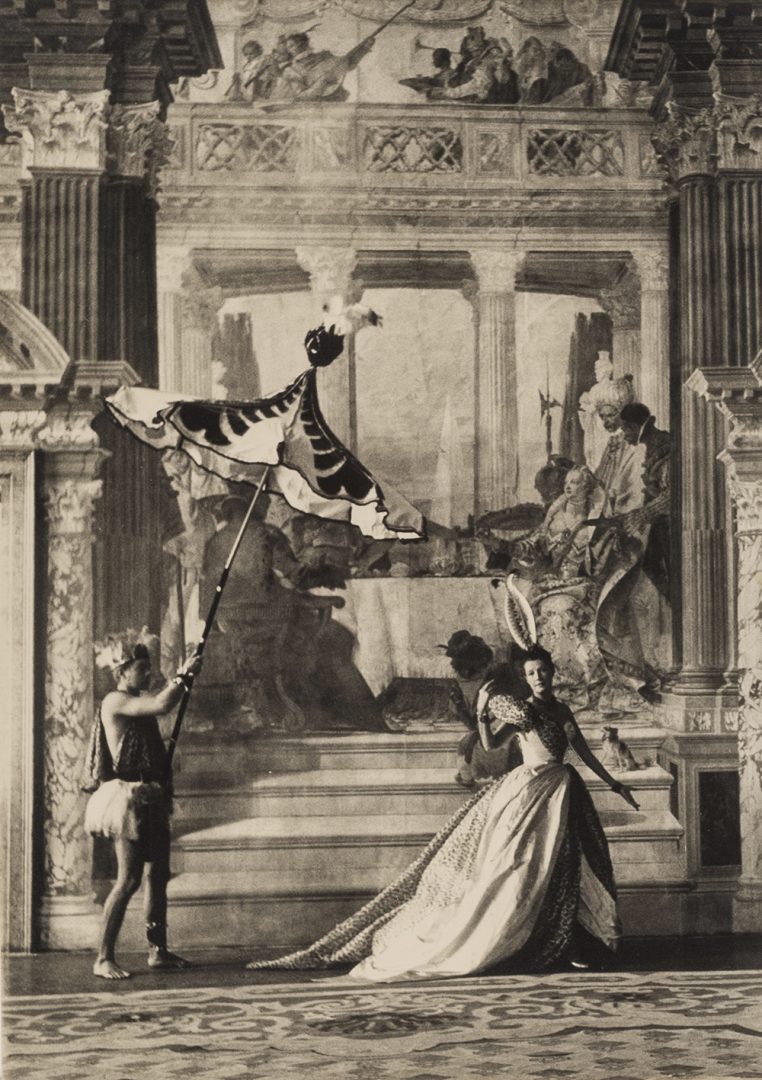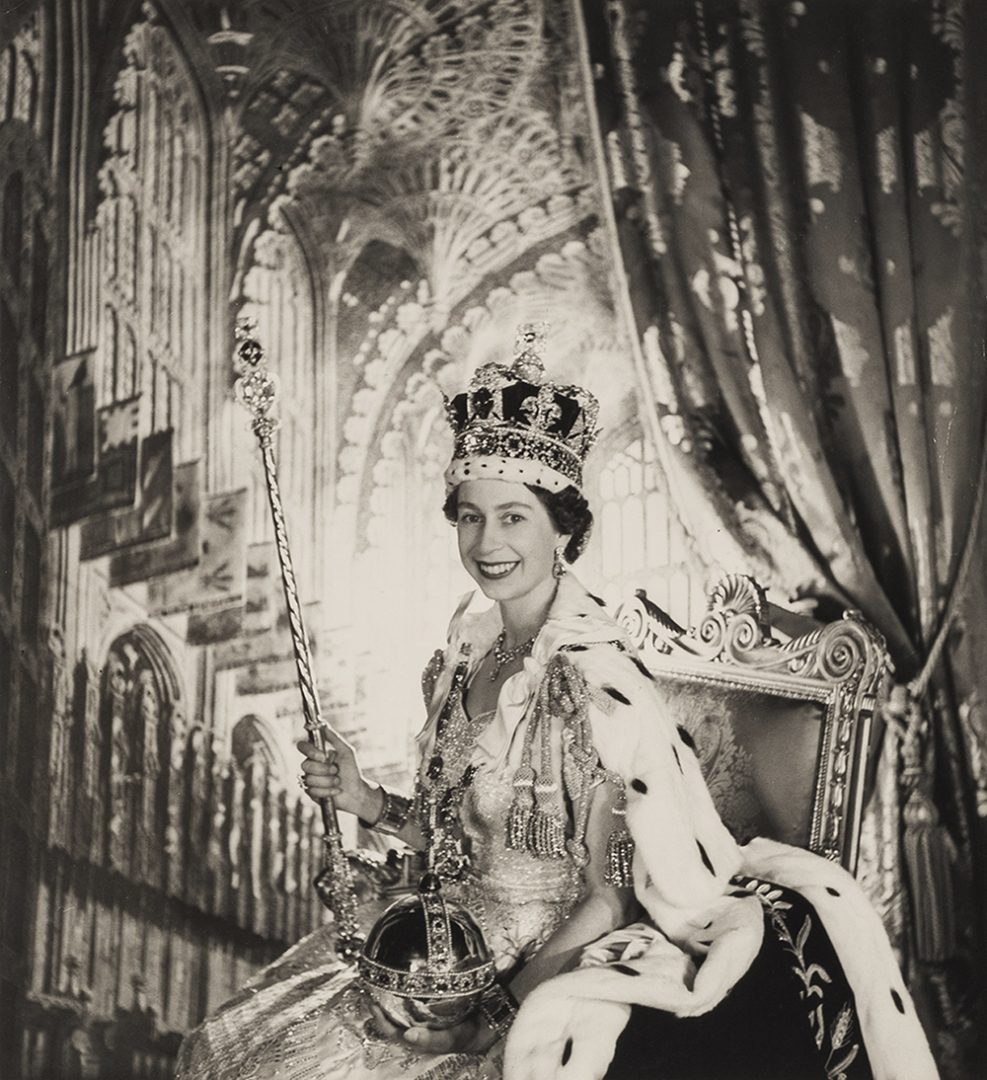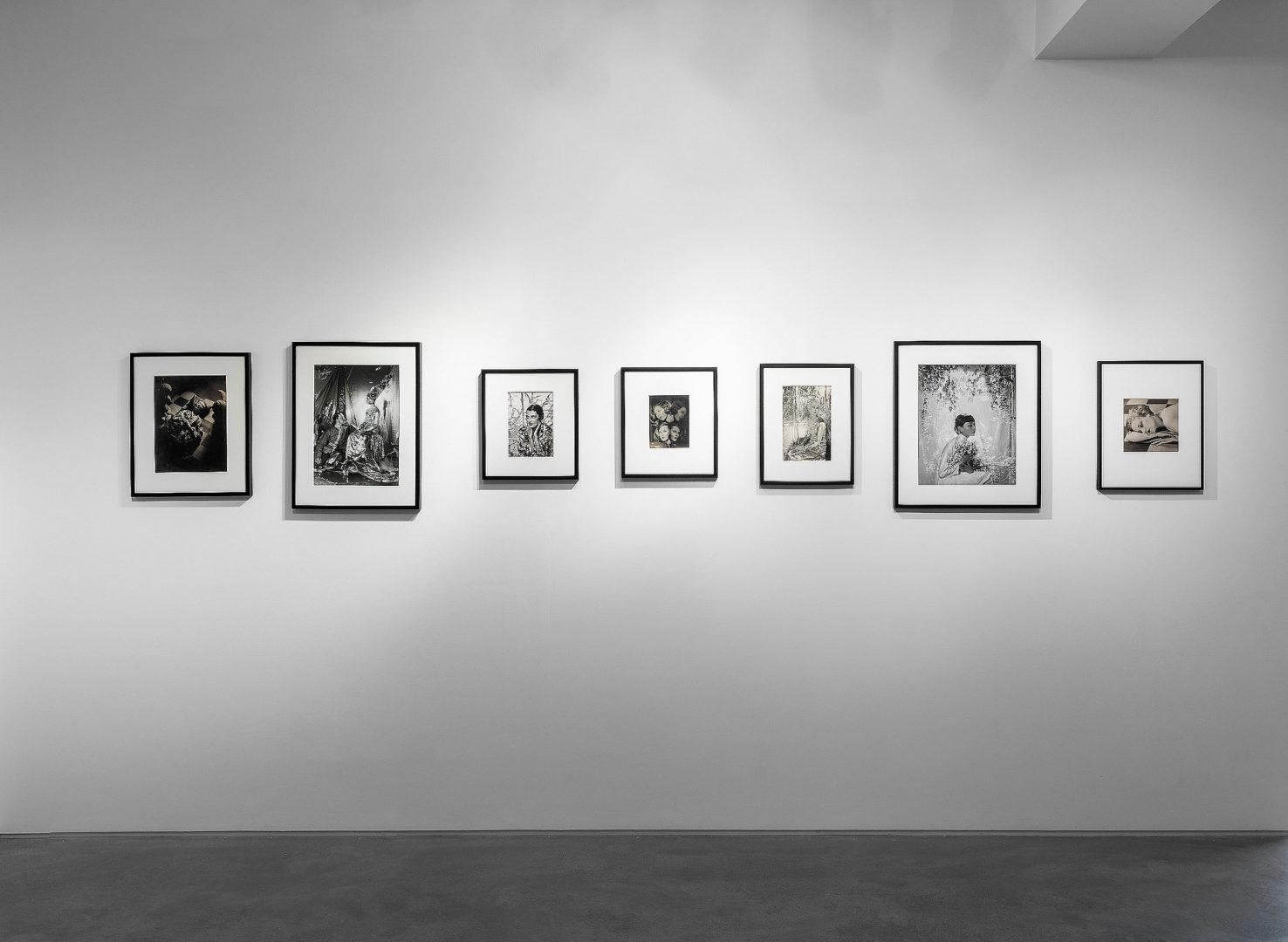
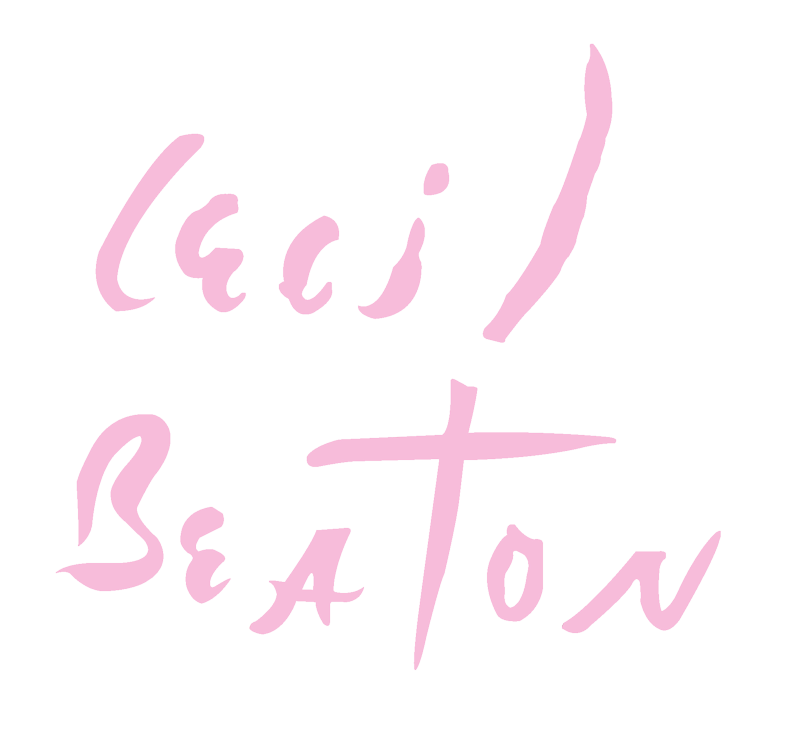
Works
Nancy and Baba Beaton, 1924
Cecil Beaton
This double portrait shows Cecil Beaton’s two younger sisters, Nancy and Baba. Born Nancy Elizabeth Louise Hardy Beaton in 1909 and Barbara Jessica Hardy Beaton in 1912, Baba and Nancy were early muses for Beaton, and they featured in many of his most notable and experimental early photographs.
Read moreMrs Beaton, c. 1925
Cecil Beaton
Cecil Beaton’s earliest sitters were those most close to hand, his mother and two younger sisters, Nancy and Baba. This early portrait depicts Beaton’s mother, Esther Beaton, known as Etty.
Read moreBaba Beaton and Prince Galitzine, 1927
Cecil Beaton
This double portrait of Beaton’s sister Baba, with Prince Nicholas Galitzine, was taken in May 1927. The pair are dressed as Heloise and Abelard for the ‘Lover’s Pageant’, held at the New Theatre, London.
Read moreBaba Beaton, 1927
Cecil Beaton
Born Barbara Jessica Hardy Beaton in 1912, Barbara or ‘Baba’ as she was widely known, was an early muse and one of the first models for her brother. This particular portrait of Baba was taken by Beaton in May 1927. She sat for the portrait in her costume as ‘Heloise’ for the ‘Lover’s Pageant’, which was held at the New Theatre, London.
Read moreEdith Sitwell, 1926
Cecil Beaton
Edith Sitwell was an English aristocrat and poet. Taken in the Beaton family’s London residence on Sussex Gardens, this portrait shows Sitwell as a medieval tomb effigy. Sitwell is photographed, supine, on linoleum tiles acquired especially for the sitting, clutching Christmas Lilies, and overlooked by two stone cherubs.
Read moreZita and Teresa Jungman, 1927
Cecil Beaton
This portrait depicts the Jungman sisters, Zita (born 1903) and Teresa (born 1907). The sisters’ escapades were constant fodder for the tabloids; Teresa would dress up as a Russian spy called Anna Worolski and tell unsuspecting men stories of mysterious jewels, Zita persuaded the Hovis factory to bake clues into a special loaf of bread for one of the groups vaunted treasure hunts. This photograph by Beaton alludes to one of the sisters’ most daring exploits.
Read moreLady Loughborough Under a Bell Jar, 1927
Cecil Beaton
This portrait, taken in 1927, was the first of a number of Lady Loughborough made by Beaton. Made at the Beaton family home in Sussex Gardens in London, it is one of his most well-known early portraits due to its daring innovation. Sheila is placed, surreally, under a bell jar, her head seemingly removed entirely from her body, and placed against a geometrically patterned backdrop.
Read moreMargot Asquith, Lady Oxford, after Henry van der Weyde, 1927
Cecil Beaton
Born Emma Margaret Tennant to Sir Charles Tennant and Emily Winsloe in 1864, Margot, as she was always known, grew up on the family estate The Glen, developing a lively spirit from a young age. With her sister, Laura, Margot founded a group called ‘The Souls’, an earlier, fin-de-siècle version of the ‘Bright Young Things’, though more politically minded.
Read moreLady Edwina Mountbatten, 1927
Cecil Beaton
Lady Edwina Mountbatten was born Edwina Ashley in 1901, to remarkable wealth and privilege. Her grandfather, Sir Ernest Joseph Cassel, was one of the richest and most powerful men in Europe, and the private financier to the future King Edward VII. She married Lord Louis ‘Dickie’ Mountbatten, the last godchild of Queen Victoria, in 1922.
Read moreLady Eleanor Smith with Lilies, 1927
Cecil Beaton
Lady Eleanor Smith, born 7th August 1902, was the daughter of Lord Birkenhead, a politician, and Margaret Furneaux. Described as ‘belonging to the woods’ and as a free spirit, not simply for her dark hair and puckish features, Smith was a lively and energetic early member of the ‘Bright Young Things’.
Read moreLady Pamela Smith, 1927
Cecil Beaton
The younger sister of Eleanor Smith, Pamela, or Pam as she was known, was the youngest daughter of Lord Birkenhead, born in 1914. She attended the Great London Pageant of Lovers dressed as Juliet, with Zita Jungman accompanying her as Romeo. Photographing the costumes for 'Vogue' magazine, Beaton captured a number of portraits of the star-crossed lovers, as well as this photograph of Smith, taken in front of a backdrop of stencilled leaves.
Read morePaula Gellibrand, Marquise de Casa Maury, c. 1928
Cecil Beaton
Paula Gellibrand was known for celebrating her stark and extraordinary appearance by donning close fitting skullcaps to conceal her hair, and by applying Vaseline to her heavy lids to further accentuate them. Beaton had described Gellibrand’s noted appearance as follows, ‘her enormous blue eyes were surrounded by a halo of dark-mushroom colour fatigue, giving her the appearance of being heavily made up.’
Read moreAnne Armstrong-Jones, 1928
Cecil Beaton
Dressed as ‘Perdita’ Johnson, Anne Armstrong-Jones, is unrecognisable under her costume in Beaton’s tableaux vivants. Complete with a painted paper wig, giving the effect of a late 18th century hairstyle, and pictured against a scenic theatrical backdrop, she is dressed in character for the Pageant of Hyde Park in 1928. Mary Johnson, Armstrong-Jones’ character, better known as ‘Perdita’, was a celebrated actress and poet of her age, an early proponent of feminist principles and the mistress of the Prince of Wales, later King George IV.
Read moreNancy Cunard, 1929
Cecil Beaton
The enigmatic Nancy Cunard was a poet, heiress and political activist. She was also muse to some of the 20th century's most celebrated writers and artists, including Constantin Brâncuși, Ernest Hemingway, Aldous Huxley, Man Ray, Ezra Pound and James Joyce.
Read moreAnna May Wong, 1930
Cecil Beaton
Born Wong Liu Tsong in Chinatown, Los Angeles in 1905, Anna May Wong was the first Chinese American film star and enjoyed a long, varied and international career, making over sixty films. Wong is photographed clutching a bouquet of gypsophila, framed with further bouquets, suspended, ingeniously, by Beaton from an invisible scaffold constructed from billiard cues.
Read moreMarianna Van Rensselaer In Charles James Hat, 1930
Cecil Beaton
This photograph depicts the New York debutante Marianna van Rensselaer modelling a hat by celebrated American couturier Charles James in 1930. Charles James began his career as a milliner in Chicago, opening his own shop in 1926 under the label ‘Charles Boucheron’. His designs were daring and radically modern, and would often be cut whilst on his customer’s heads.
Read moreDame Edith Sitwell At Tea, 1930
Cecil Beaton
Between Edith Sitwell and Cecil Beaton there was a shared love of spectacle and theatricality. This photograph is no exception. Taken in 1930 in the Sitwell ancestral manor, Renishaw Hall, Sitwell sits, erect, in bed, receiving breakfast tea from her nephew’s nanny, Mary Cole.
Read moreGeorgia Sitwell, Renishaw, 1930
Cecil Beaton
Beaton was well acquainted with the Sitwell family, frequently photographing Edith Sitwell throughout her life. Edith and her brothers Sacheverell and Osbert were important figures of London’s literary and social scenes. This portrait of Sacheverell’s wife, Georgia, was taken two years after they married.
Read moreGertrude Lawrence, 1930
Cecil Beaton
Gertrude Lawrence, born Gertrud Klasen in 1898, was an actress, singer, and dancer, widely renowned for her time on stage in the West End, and on Broadway in New York. She was the first British-born actress to headline an American musical on Broadway.
Read moreCorinne Griffith, 1930
Cecil Beaton
This photograph was taken in 1930 to accompany an article in the May issue of 'Screenland' magazine titled Fantastic Hollywood: Cecil Beaton’s Impressions of Screen City. Aged twenty-four, Beaton travelled to Hollywood to illustrate Anita Loos’ new book about the film industry and remained to make a remarkable series of portraits that captured the romance and glamour of Hollywood’s screen stars.
Read moreTallulah Bankhead, 1930s
Cecil Beaton
This portrait depicts the American actress Tallulah Bankhead. She was a true celebrity of the era, not only appearing in twenty-four plays during these eight years, but also well-known in her own right for her wit as well as for her wild, hedonistic exploits.
Read moreMrs Daisy Fellowes, c.1930s
Cecil Beaton
Daisy Fellowes, born Marguerite Séverine Philippine Decazes de Glücksberg in Paris in 1890, was the heiress to the Singer sewing machine company and the Paris editor of American 'Harper’s Bazaar'. She married her second husband, Reginald Fellowes, in 1919, who was the cousin of Winston Churchill. The couple were central figures of London society at the time, often hosting legendary parties, at which Beaton was a frequent guest.
Read moreMeraud Guinness, 1930s
Cecil Beaton
Meraud Guinness, also known by her married name, Meraud Guevara, was a painter, author and poet, who lived most of her life in France. Born in London in June 1904, into the wealthy and aristocratic Guinness family – perhaps most renowned for producing the dry stout, Guinness Beer. She was trained at the Slade School of art, and later, took painting lessons from Francis Picabia in France.
Read moreMadame Denise Bourdet, 1930s
Cecil Beaton
Denise Bourdet was born Denise Rémon in Tours, France in 1892. The daughter of Maurice Rémon, a prolific translator of novels and plays, she followed in his footsteps with an interest in the arts. From an early age, Bourdet was known as a musical prodigy, performing compositions by Eric Satie to impress her parents’ friends.
Read moreLady Pembroke, 1930s
Cecil Beaton
Lady Mary Dorothea Hope Herbert, Countess of Pembroke, is photographed here within her family's stately home — the historical Wilton House in the English countryside, near Salisbury in Wiltshire. Wilton House has been the country seat of the Earls of Pembroke since the 1540s, it is a place steeped in English culture and heritage, having been inextricably linked to the political and artistic circles of England.
Read moreCora Caetani, 1930s
Cecil Beaton
In this image, Beaton obscures much of the original photograph under a hastily, but deftly, applied white marker. Beaton would frequently edit his portraits, wanting to flatter his subjects in order to ingratiate himself within their glamorous circles. With this photograph, however, Beaton is more experimental in his edit, dismembering his subject to create floating forms.
Read moreMrs Beatrice Guinness, 1930s
Cecil Beaton
In this image, Beaton’s backdrop employs the iconography of the avant-garde movement, Constructivism, with his use of a simplified composition that focusses on the relationship of geometric forms collaged together in different textures.
Read moreGary Cooper, 1931
Cecil Beaton
Always looking for new and interesting ways to depict his sitters, Beaton experiments with framing and perspective in this photograph. Angled from below, the portrait plays with scale as actor Gary Cooper looms large at the centre of the image.
Read moreJohnny Weissmuller, 1932
Cecil Beaton
Johnny Weissmuller was both an Olympic athlete and actor. After winning five Olympic gold medals for swimming and one bronze medal for water polo, Weissmuller went on to play Tarzan in Edgar Rice Burrough’s Tarzan the Ape Man, a popular franchise screened through most of the 1930’s and 1940’s.
Read moreKaren Morely, 1932
Cecil Beaton
This portrait depicts American actress Karen Morley on an Art Deco studio set in Hollywood in 1932, at the height of her fame and success. Beaton uses the set to great effect, creating an awe-inspiring mise-en-scene, referring to both the glamour of the 1930s and classical antiquity.
Read moreMerle Oberon, 1934
Cecil Beaton
Merle Oberon, born 1911, was a famous film actress. In the present portrait, made in 1934, Oberon exudes glamour. She poses theatrically against a backdrop of opulent fabrics and textures in typical Beaton fashion. Beaton makes use of dramatic lighting to add intensity to the portrait.
Read moreMerle Oberon as Antonita, 1934
Cecil Beaton
Merle Oberon was an actress who gained notoriety through her many roles in Alexander Korda’s films in the 1930s. Here, Oberon poses as Antonita, a character in Alexander Korda’s 1934 'The Private Life of Don Juan'. Oberon wears a black lace veil, and proffers a theatrically large Catholic crucifix.
Read moreMary Taylor, c. 1934
Cecil Beaton
In this photograph, Mary Taylor appears indifferent to the strange scene that unfolds on the canvas behind her as she fixes the tulle embellishments on the neckline of her black gown. Beaton photographs the model in front of a painting by Russian avant-garde artist, Pavel Tchelitchew.
Read moreThe Countess of Pembroke, c. 1935
Cecil Beaton
Born in 1903, Lady Mary Dorothea Hope was the daughter of John Adrian Louis Hope, 1st Marquess of Linlithgow and Hersey Alice Hope Eveleigh-de Moleyns. She married into the prestigious Herbert family, receiving the title of Countess of Pembroke in July 1936.
Read moreLady Jersey, 1935
Cecil Beaton
This portrait depicts Patricia Kenneth Child Viliers, Countess of Jersey, at Osterley House, London in 1935. Born in 1914 as Patricia Kenneth Richards in New South Wales, Lady Jersey met George, 9th Earl of Jersey in the 1920s on a trip to the UK, and they married in 1932.
Read moreElsa Schiaparelli, 1936
Cecil Beaton
Photographed by Beaton in 1936, Elsa Schiaparelli was at the height of her career as a fashion designer, renowned for the inventiveness and playfulness of her designs. Pictured in a moment of introspection, Schiaparelli wears an elaborate feathered cape and bold costume jewellery, which were a signature of her couture house.
Read moreModels wearing Schiaparelli Desk Suit, ‘Vogue’, 1936
Cecil Beaton
This photograph highlights Beaton’s Surrealist leanings, collaborating with two other great Surrealist thinkers in their fields, Elsa Schiaparelli and Salvador Dalí. The mis-en-scene depicts two models standing apart from one another, one hiding their face, the other with arms aloft, legs wide.
Read moreSchiaparelli Model, Paris, c.1936
Cecil Beaton
The model in this photograph wears clothes by the Italian fashion designer, Elsa Schiaparelli. In 1936, Schiaparelli’s couture house, based at the fashionable address of Place de Vendôme in Paris, was one of the most celebrated of the era.
Read moreSalvador Dali in Fencer’s Mask, 1936
Cecil Beaton
This portrait was taken as part of a photographic shoot for American 'Vogue' with the Surrealist artist Salvador Dalí and his wife and muse, Gala, in 1936. The couple are mirrored in their poses by a contemporaneous work by the artist, 'Couple with Their Heads Full of Clouds' (1936).
Read moreAlice B. Toklas And Gertrude Stein, 1936
Cecil Beaton
Alice B. Toklas and Gertrude Stein were an American Jewish couple, who both individually gained renown for their contributions to literary modernism. Having met in Paris in 1907, they became prolific members of the Parisian avant-garde.
Read moreMrs Mona Williams, 1936
Cecil Beaton
Mrs Mona Williams, later and more widely known as Mona von Bismarck, was an American Socialite who enjoyed a reputation as one of the most revered and influential celebrities in her day. She was married five times, including to Mr Harrison Williams, who was considered one of the richest men in America.
Read moreMary Oakes and Mary Gosgrave for ‘Vogue’, 1936
Cecil Beaton
This photograph was taken by Beaton for Vogue in June 1936, showcasing midsummer furs. The three figures form a diagonal line within a white boxed stage, surrounded by contemporary film posters and a drawn ‘Exit’ sign above the door: evoking the interior of a cinema.
Read moreVicomtesse De Noailles At The Ruins Of The Paris Exposition, 1938
Cecil Beaton
Marie-Laure de Noailles, dubbed ‘the Vicomtesse du bizarre’, was born in 1902 as Marie-Laure Bischoffsheim. The descendant of a wealthy German banking family and members of the French aristocracy, her ancestry traced back to the Marquis de Sade.
Read moreJean Patchett Against Cutout Backdrop, For ‘Vogue’, 1949
Cecil Beaton
Photographed here for the April 1949 issue of American Vogue, Jean Patchett is pictured against a backdrop of Henri Matisse’s cut outs, styled in the latest post-war fashions. The brightly coloured organic motifs, which the artist collaged, juxtapose with the voluminous, sharp diagonals of Patchett’s dress.
Read moreCarmen Dell’Orefice With Cutout Backdrop, For ‘Vogue’, 1949
Cecil Beaton
As Henri Matisse grew older, and ill health prevented him from painting, he developed the radical technique of the cut-out. Matisse’s cut-outs have been an enduring aesthetic touchstone for artists and photographers over the years. Cecil Beaton was no exception.
Read moreJean Patchett, For ‘Vogue’, 1949
Cecil Beaton
Jean Patchett arrived in New York from Maryland in 1948, aged 22. Signing with Ford models, her career quickly took off, and in September of that year she had her first feature in 'Vogue'. By 1949, she was one of the most renowned models of the era, whose elegance and glamour became defining features of the next decade.
Read moreGuests At Carlos De Bestegui’s Ball, 1951
Cecil Beaton
Invitations to Carlos de Bestegui’s Bal Oriental were sent out six months in advance, giving his over one thousand guests plenty of time to work on their elaborate costumes. The event drew much anticipation, the first major European social event since the Second World War, and Beaton was dispatched to photograph the events of the evening by 'Vogue'.
Read moreHer Majesty The Queen, Variation On The Official Coronation Portrait, 1953
Cecil Beaton
Cecil Beaton was approached by the Royal Palace and commissioned to be an official photographer for the 1953 coronation by Queen Elizabeth which took place on 2nd June. The coronation was held at Westminster Abbey over a year after Elizabeth had ascended to the throne at just 26 years old.
Read moreNancy James Modelling One Of Her Husband’s Creations, 1955
Cecil Beaton
Charles James, known as ‘America’s First Couturier’ was a radically modern dressmaker, who, by the 1950s was making the most expensive gowns in the world. Beaton’s portrait of the designer’s wife, Nancy James, was made in 1954, the year after the pair married. She models the ‘Swan’ dress, one of James’s most celebrated, and characteristically complex, haute couture designs.
Read moreCoco Chanel, Paris, 1965
Cecil Beaton
Born Gabrielle Bonheur Chanel in 1883, Coco Chanel became one of the most celebrated couturiers in the twentieth century. Chanel is credited for liberating women’s clothing from the corseted and restrictive style of the turn of the century, ushering in a new era with her revolutionary clothes.
Read moreCecil Beaton
On view at the gallery
1 July – 12 September 2020
Huxley-Parlour are pleased to be hosting an exhibition of vintage and early photographs by Cecil Beaton. The works on display trace his career from his early experimental photographs in the 1920s through to fashion and portrait work in the 1940s and 1950s.
The works are now on view at the Swallow Street gallery.
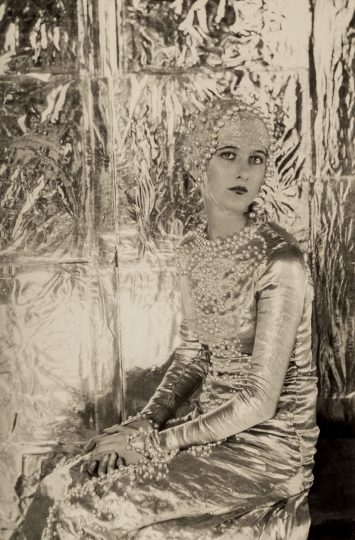
Cecil Beaton was born in Hampstead in 1904. Experimental from an early age, his younger sisters, Nancy and Baba, proved useful props for Beaton as a young photographer, as he experimented with backdrops, materials and photographic techniques. Photographs included in this exhibition include early portraits of his mother and his two sisters in theatrical costume.
Placing himself at the centre of fashionable society in the 1920s, Beaton became a prominent member of the ‘Bright Young People’, and found himself uniquely placed to photograph a generation of young socialites, avant-garde writers and artists. Stylish and innovative, his bold use of pattern, line and texture reflected the extravagance of the era and the high-spirited characters of his sitters.
Beaton’s photographs provide an unparalleled insight into the lives of the ‘Bright Young Things’, and both the public and private images they fashioned for themselves. He launched his career as a society photographer in 1926 with an exhibition at the Cooling Galleries, London. Early portraits in the exhibition include a number of celebrated society figures, as well as artistic figures including poet and critic Edith Sitwell, and actresses Talullah Bankhead and Anna May Wong.
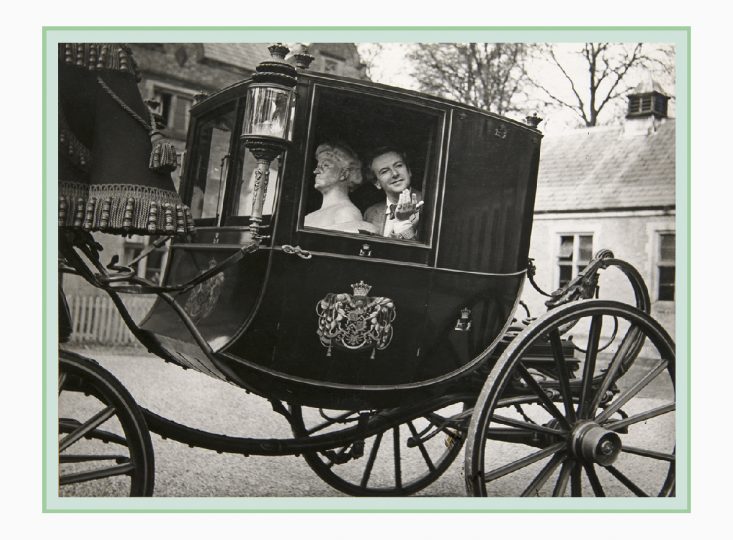
Beaton’s photographs provide an unparalleled insight into the lives of the ‘Bright Young Things’, and both the public and private images they fashioned for themselves.
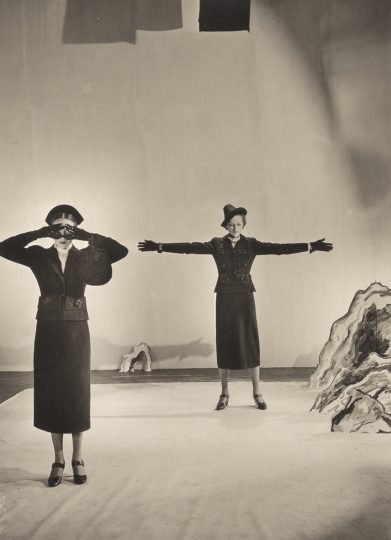
Beaton quickly became known for his theatrical use of elaborate props, costumes, and hand painted backdrops. He was celebrated for his ability to deftly reference the history of art, as well as the subtle use of motifs borrowed from emerging European Surrealism. He worked with the play of projected shadows and patterns of light through cut-out paper and used Surrealist props inspired by Giorgio de Chirico and Salvador Dalí, who he photographed in 1936.
Beaton’s career as an internationally renowned fashion photographer evolved naturally from his work as a society portraitist, and flourished under the patronage of Vogue, first in London and Paris, and by 1929, New York. A number of works in the exhibition demonstrate his innovative and distinctive fashion photography, and were produced during his time working for American Vogue and Harper’s Bazaar.
Beaton was appointed as an official photographer for the Ministry of Information in 1940, assigned to document various aspects of the war effort at home and abroad. He became the Royal photographer of choice, documenting the coronation of Queen Elizabeth II in 1953. After the war, Beaton returned to fashion photography. He gained Academy Awards for his contributions to the film versions of the musicals, Gigi (1958) and My Fair Lady (1964).
The Exhibition
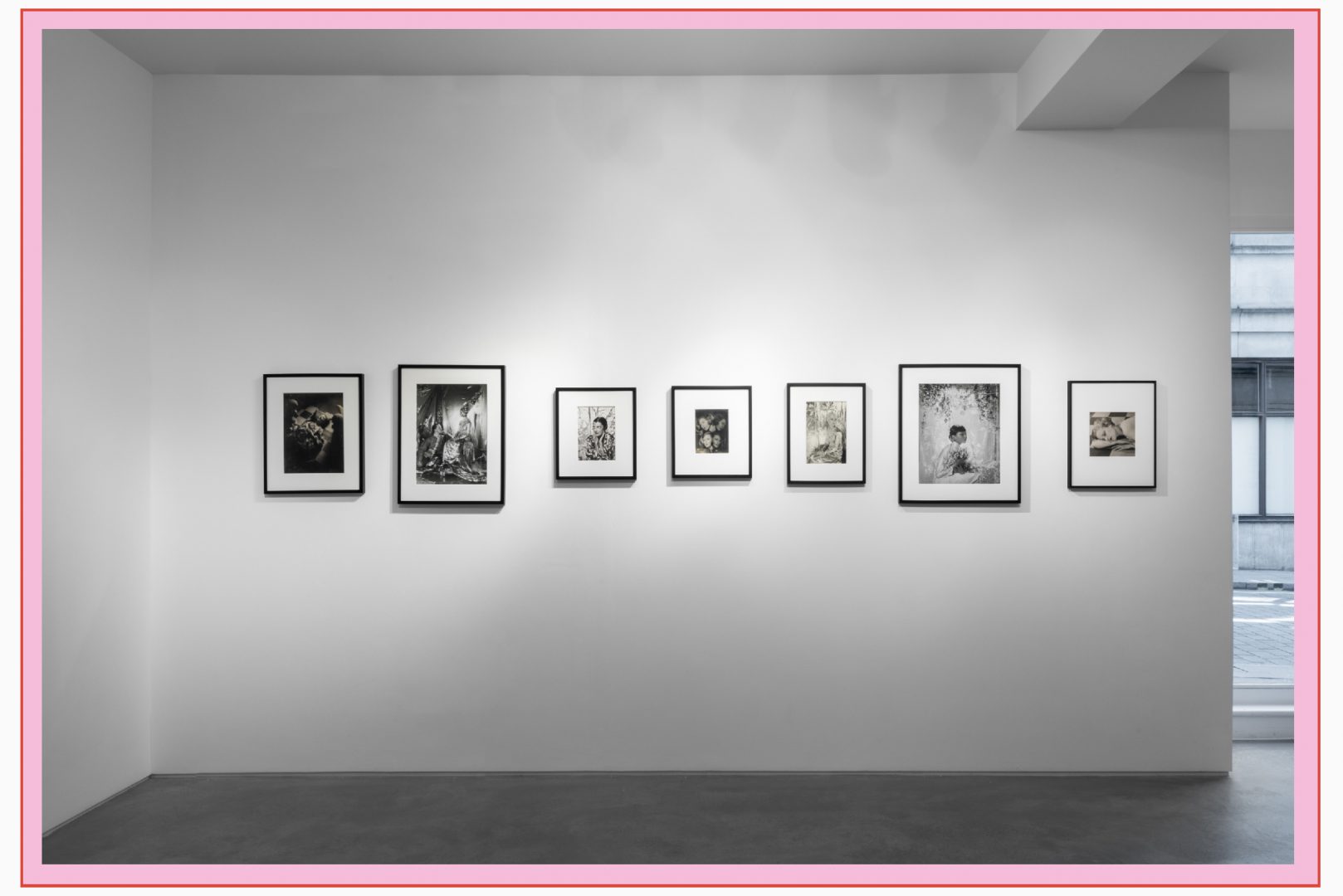
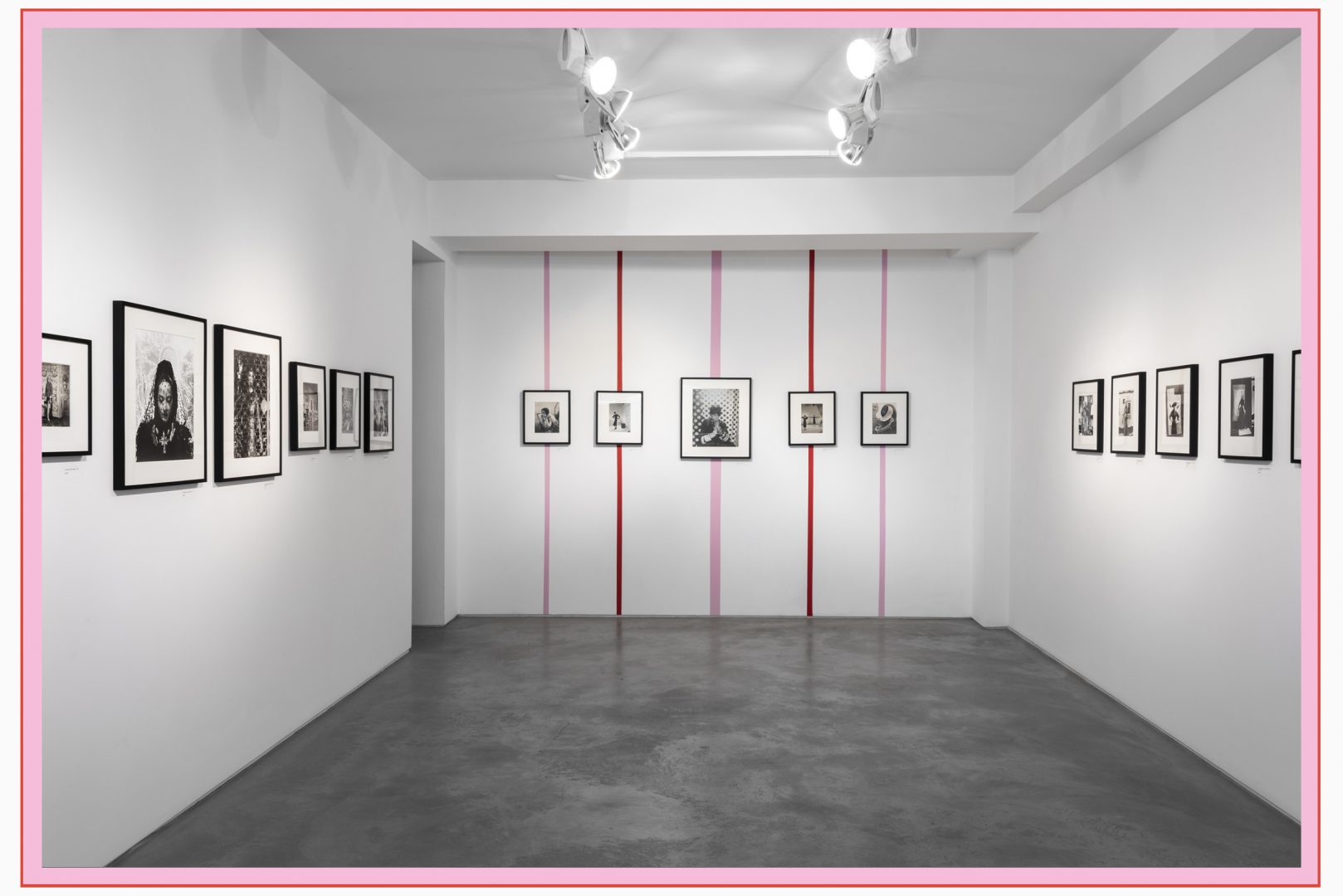
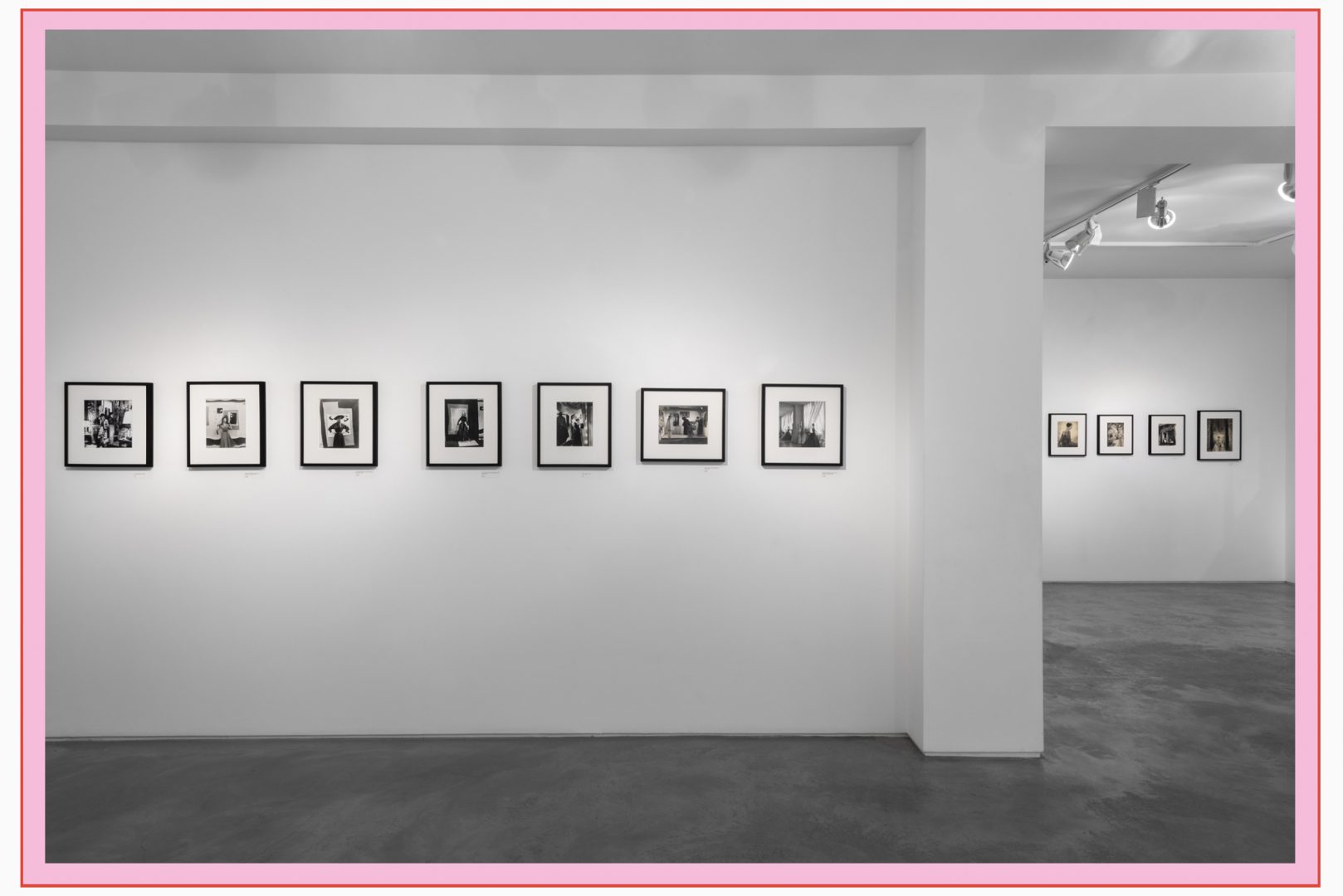
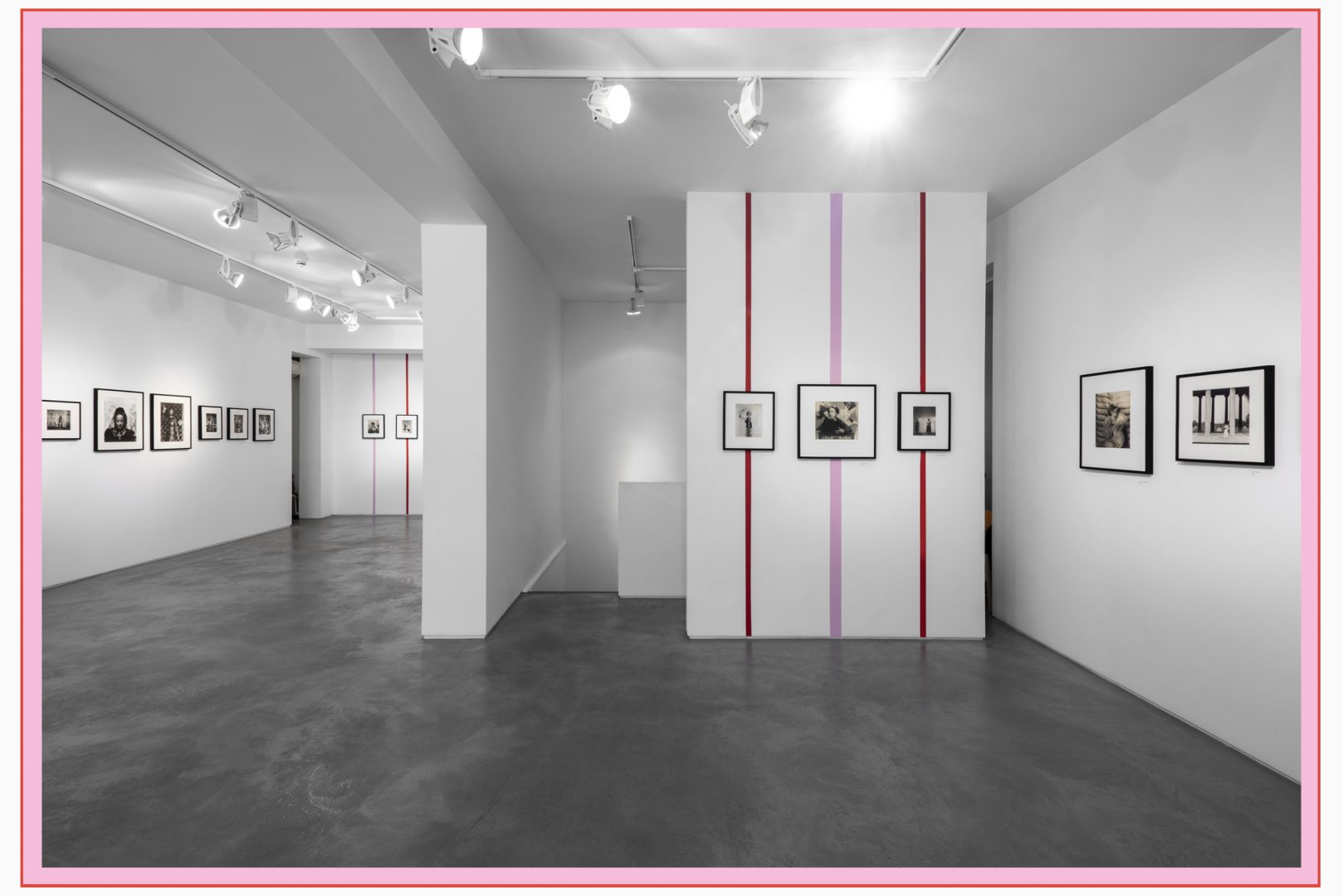
Enquire about Cecil Beaton
